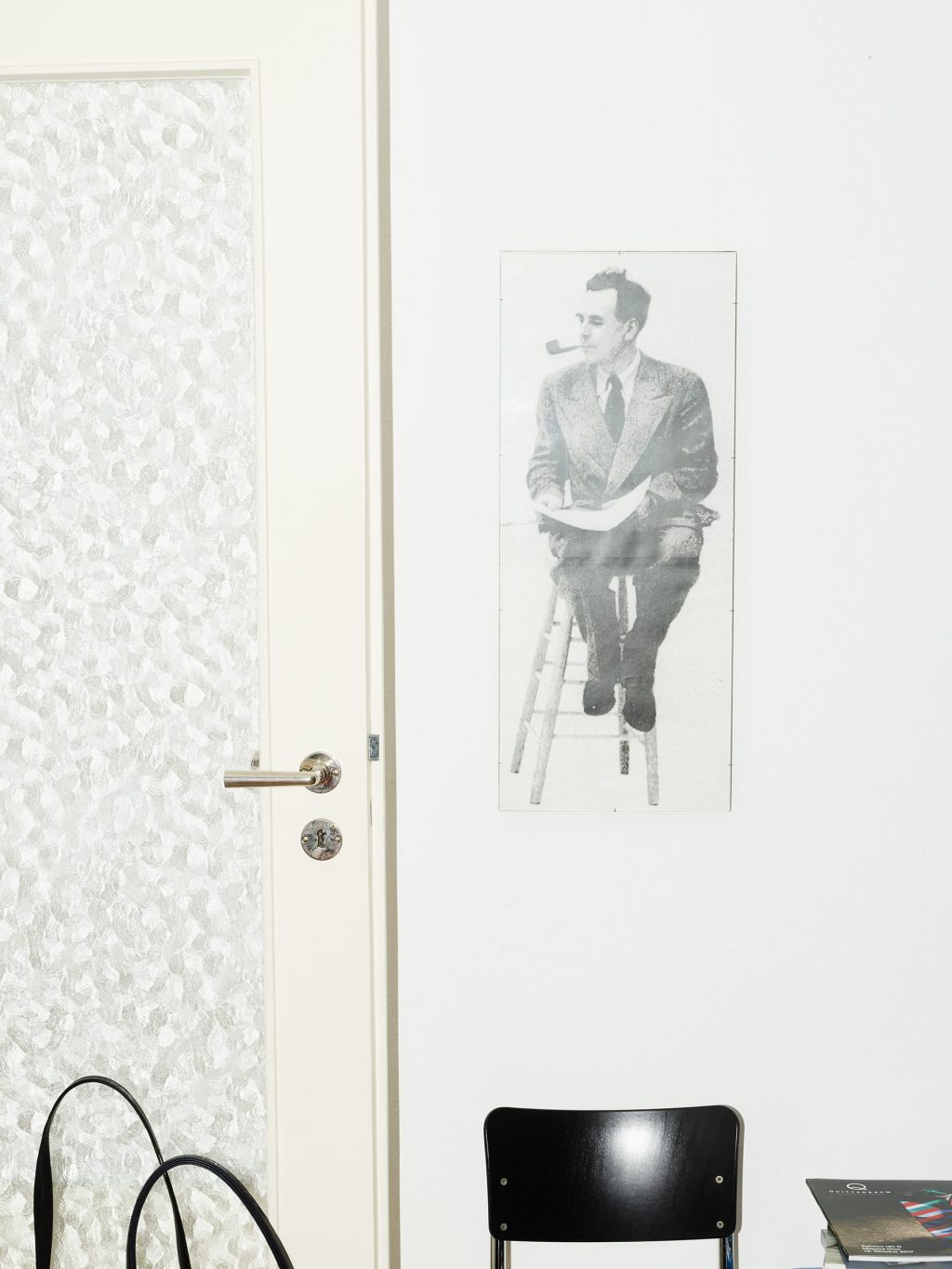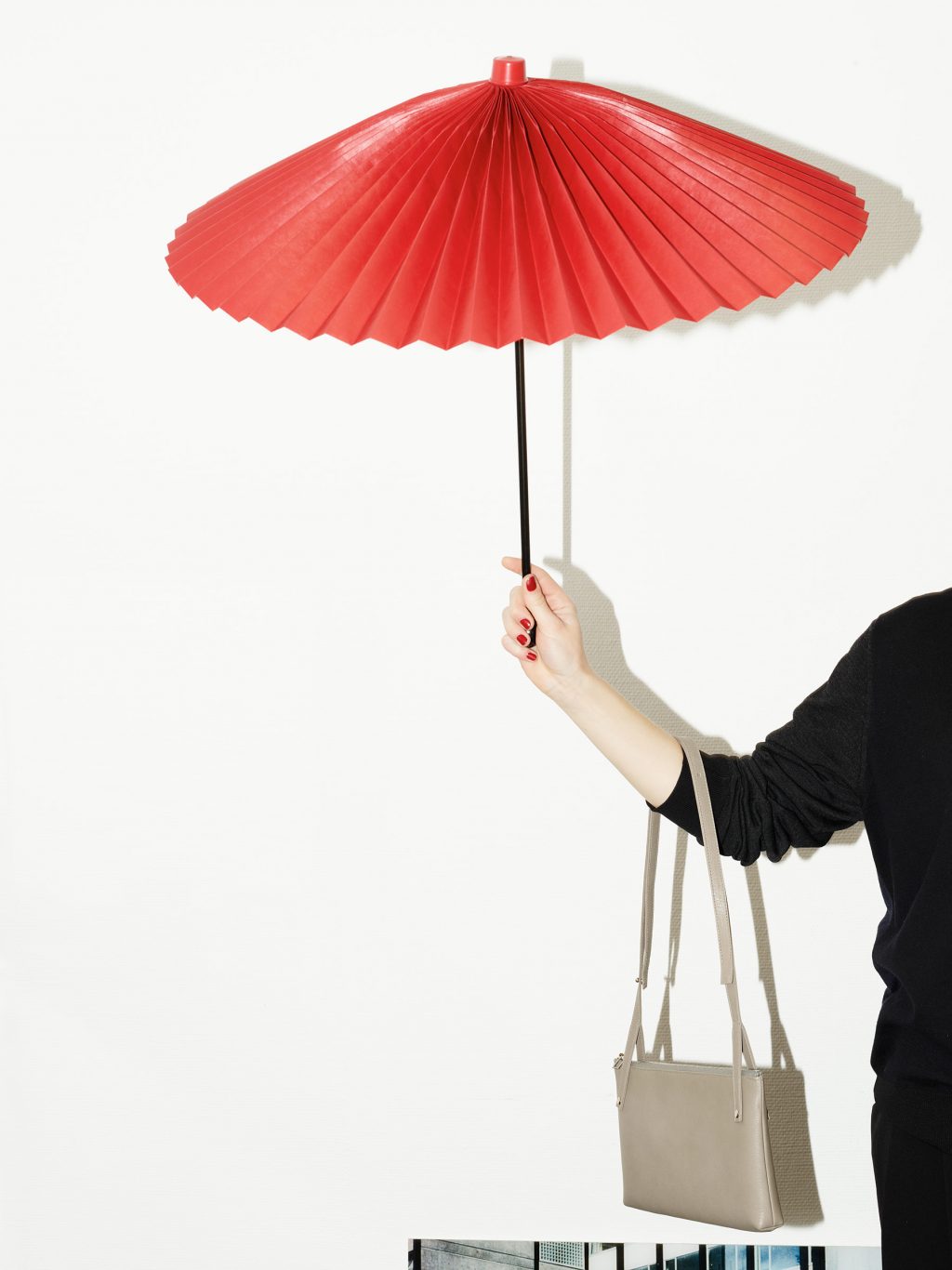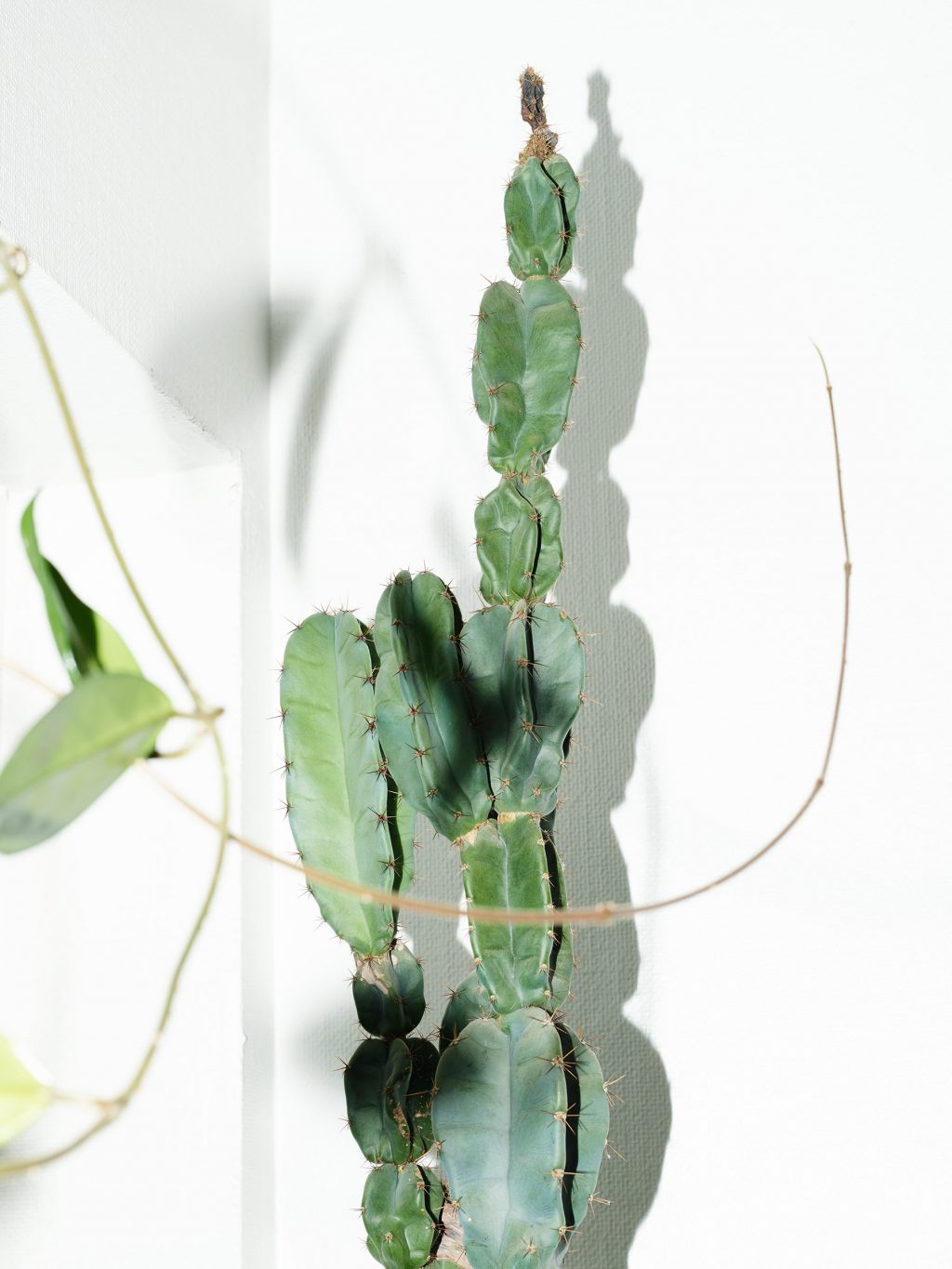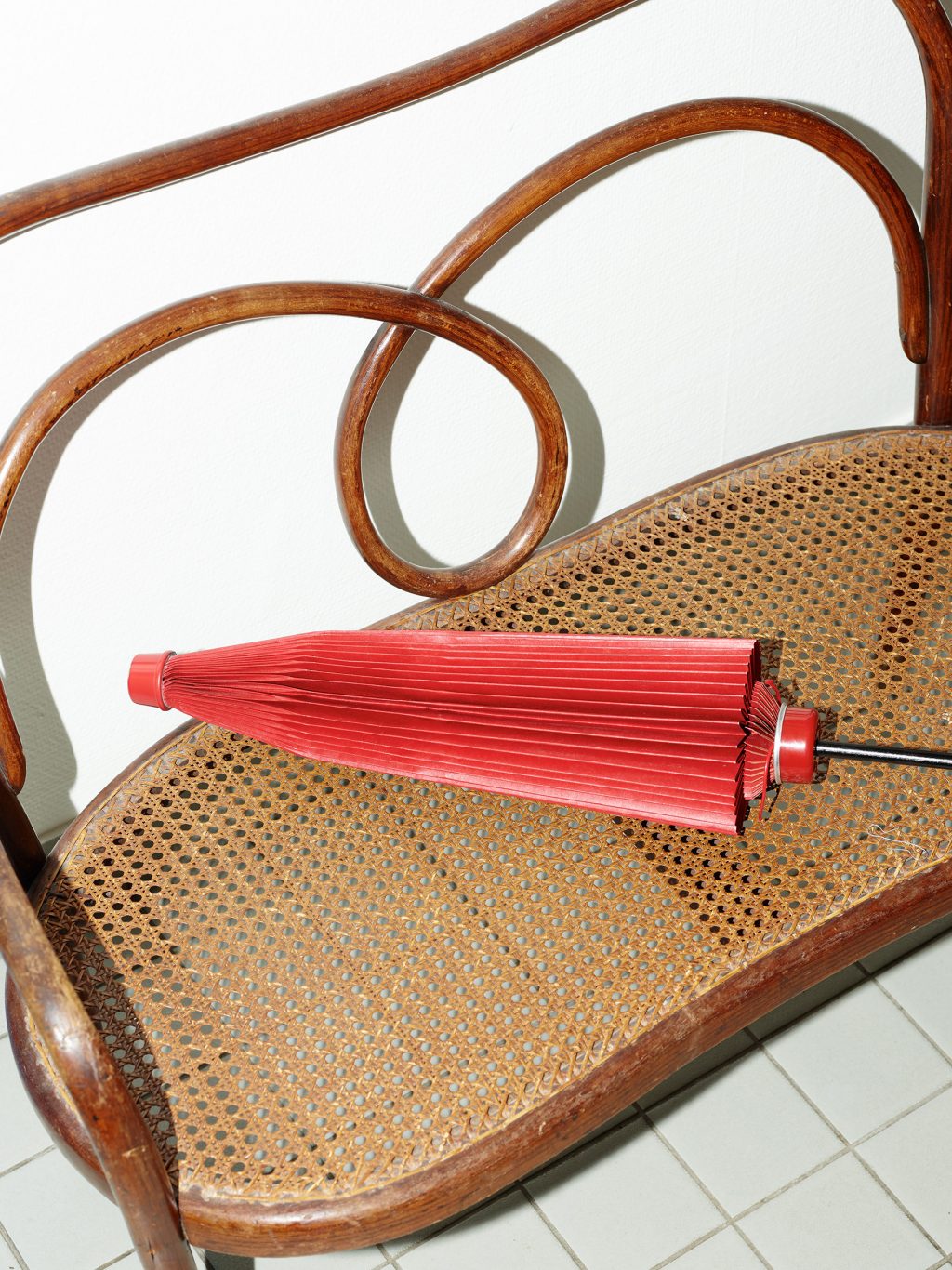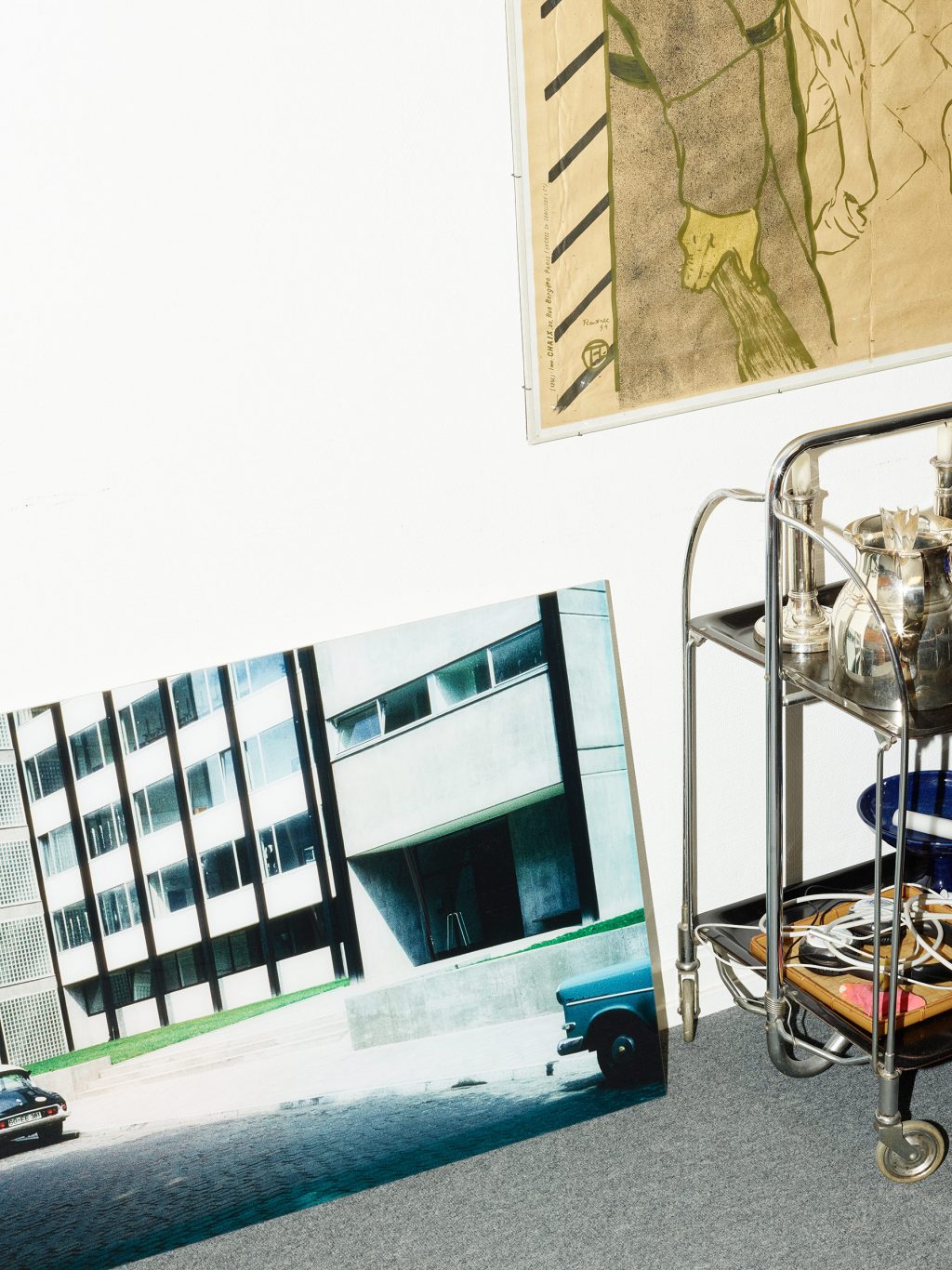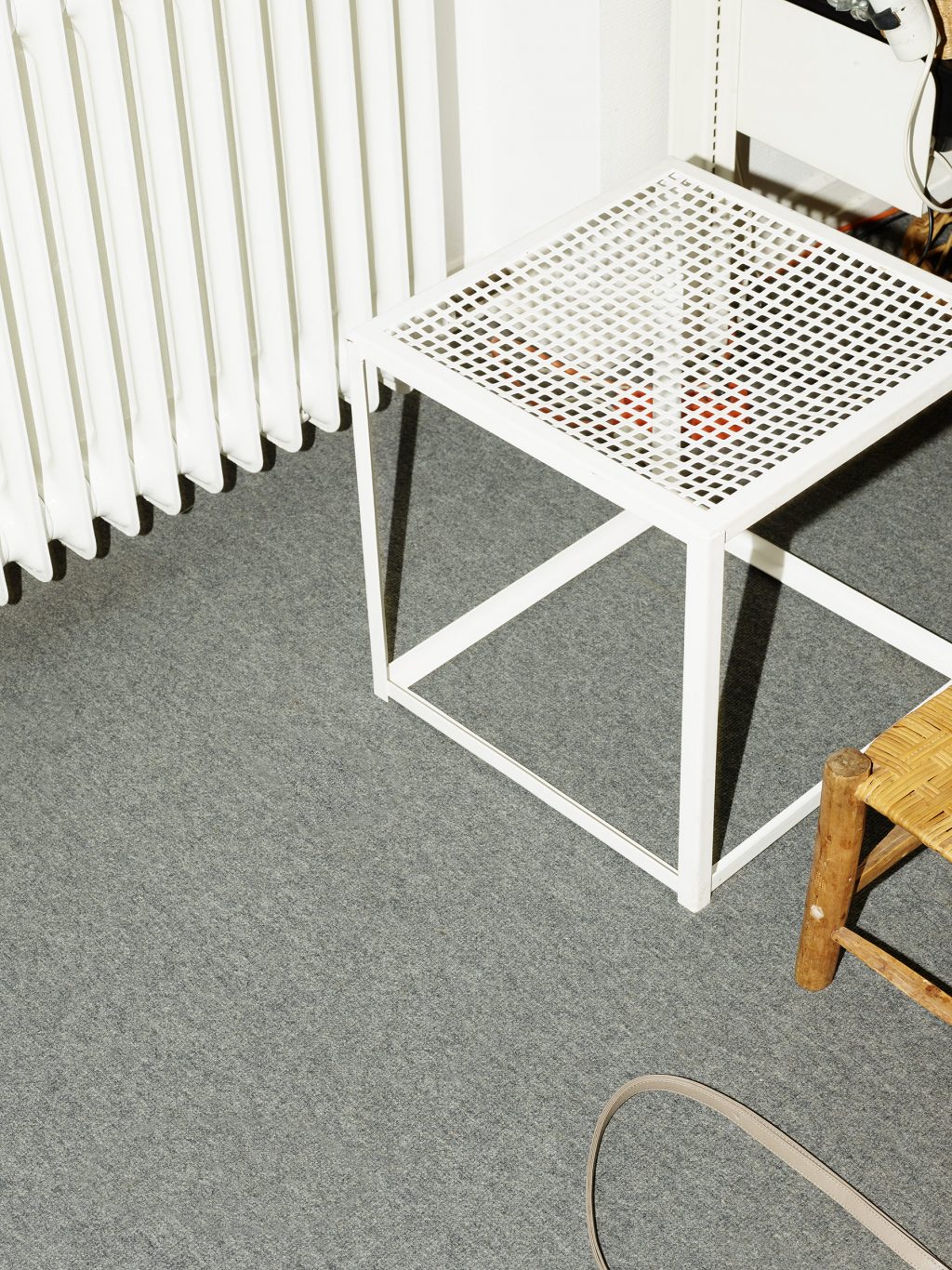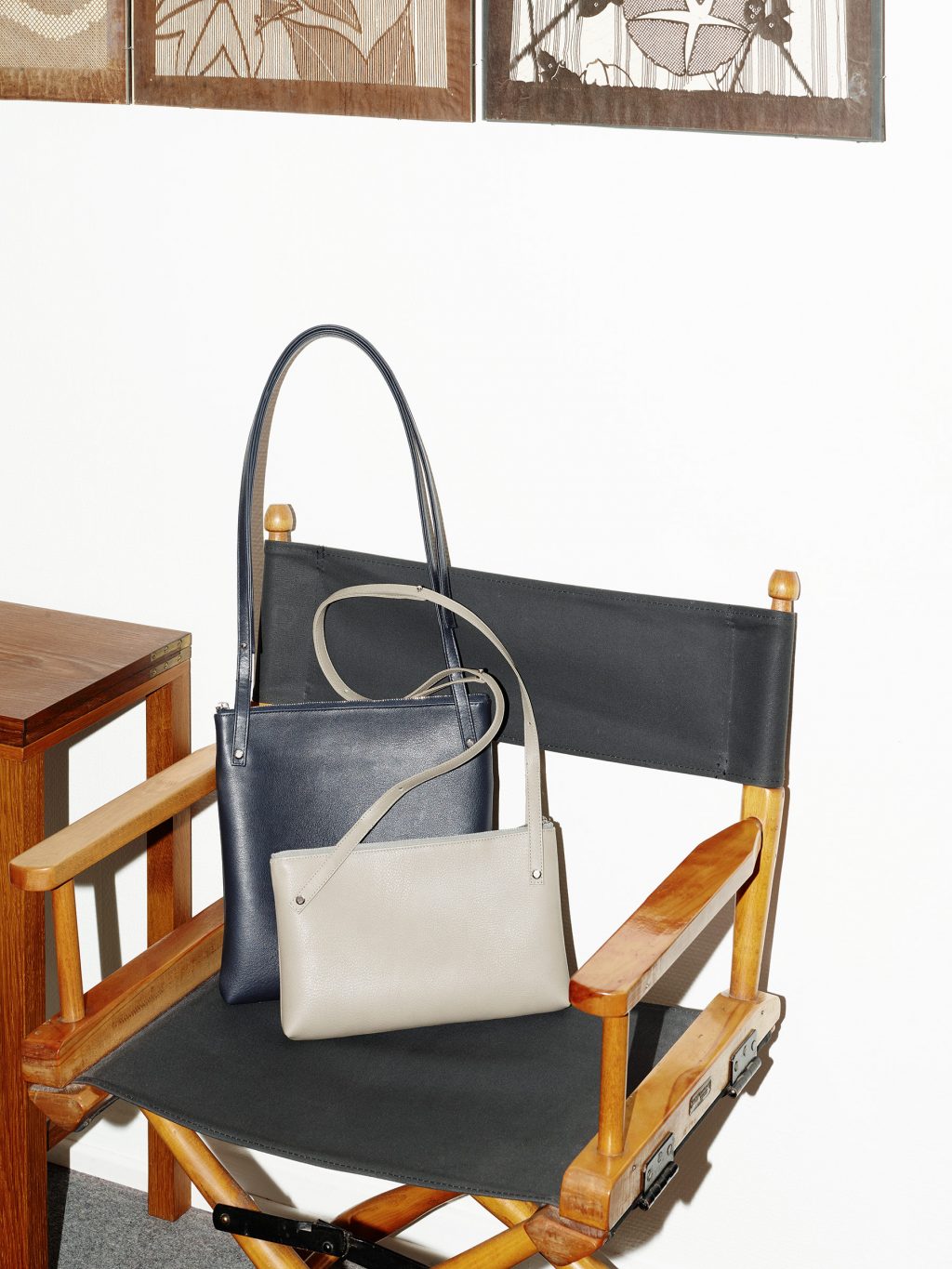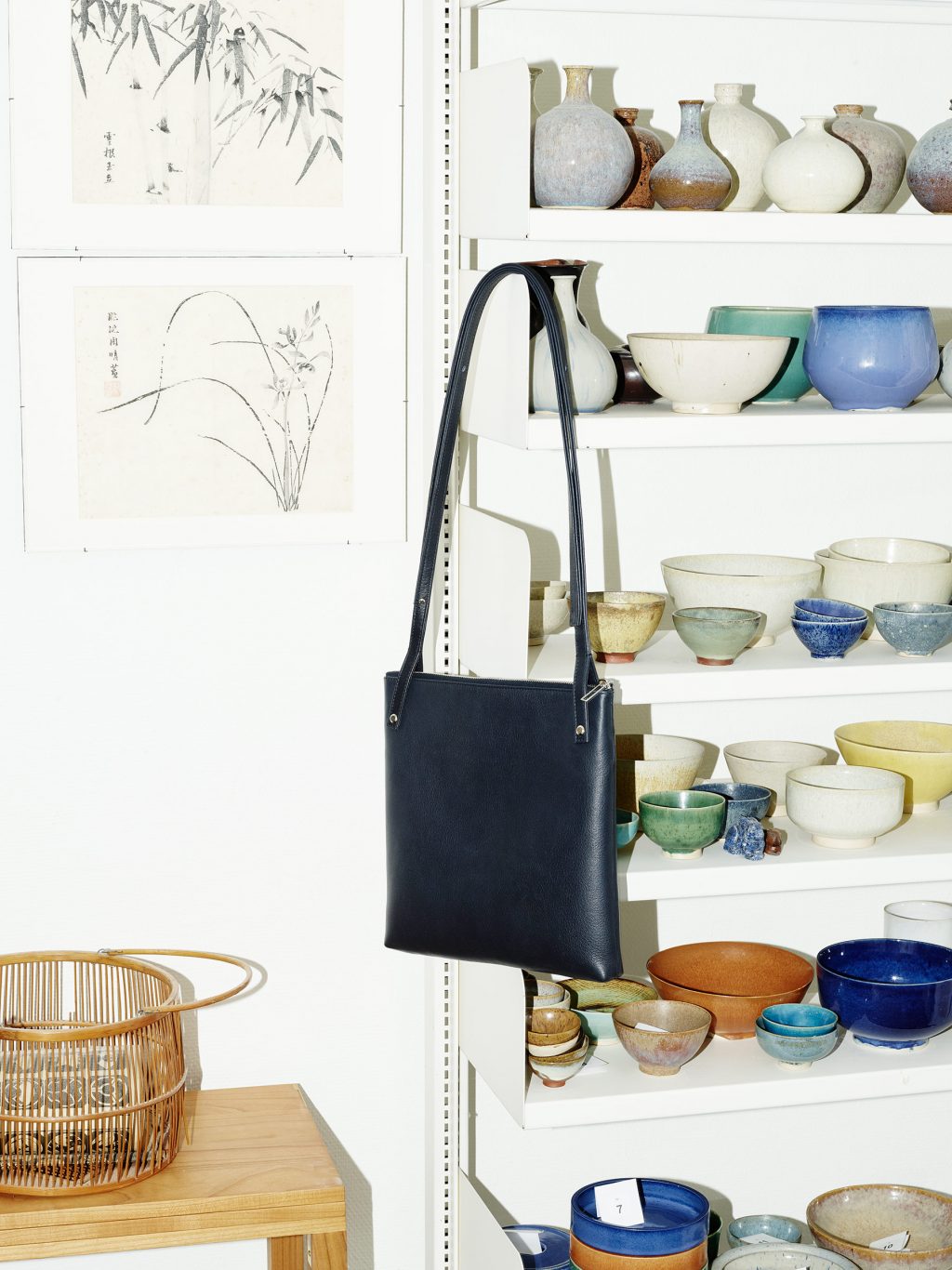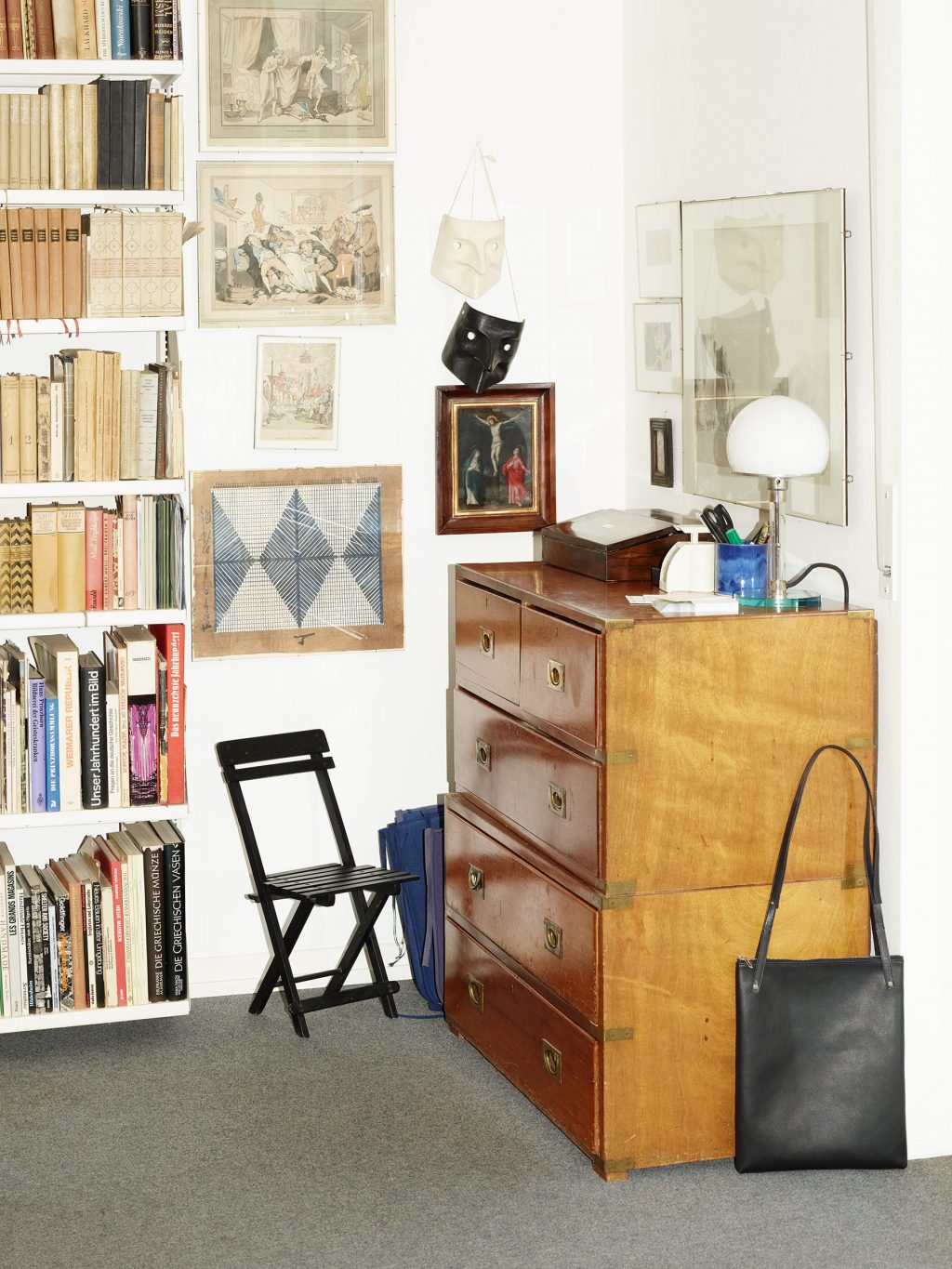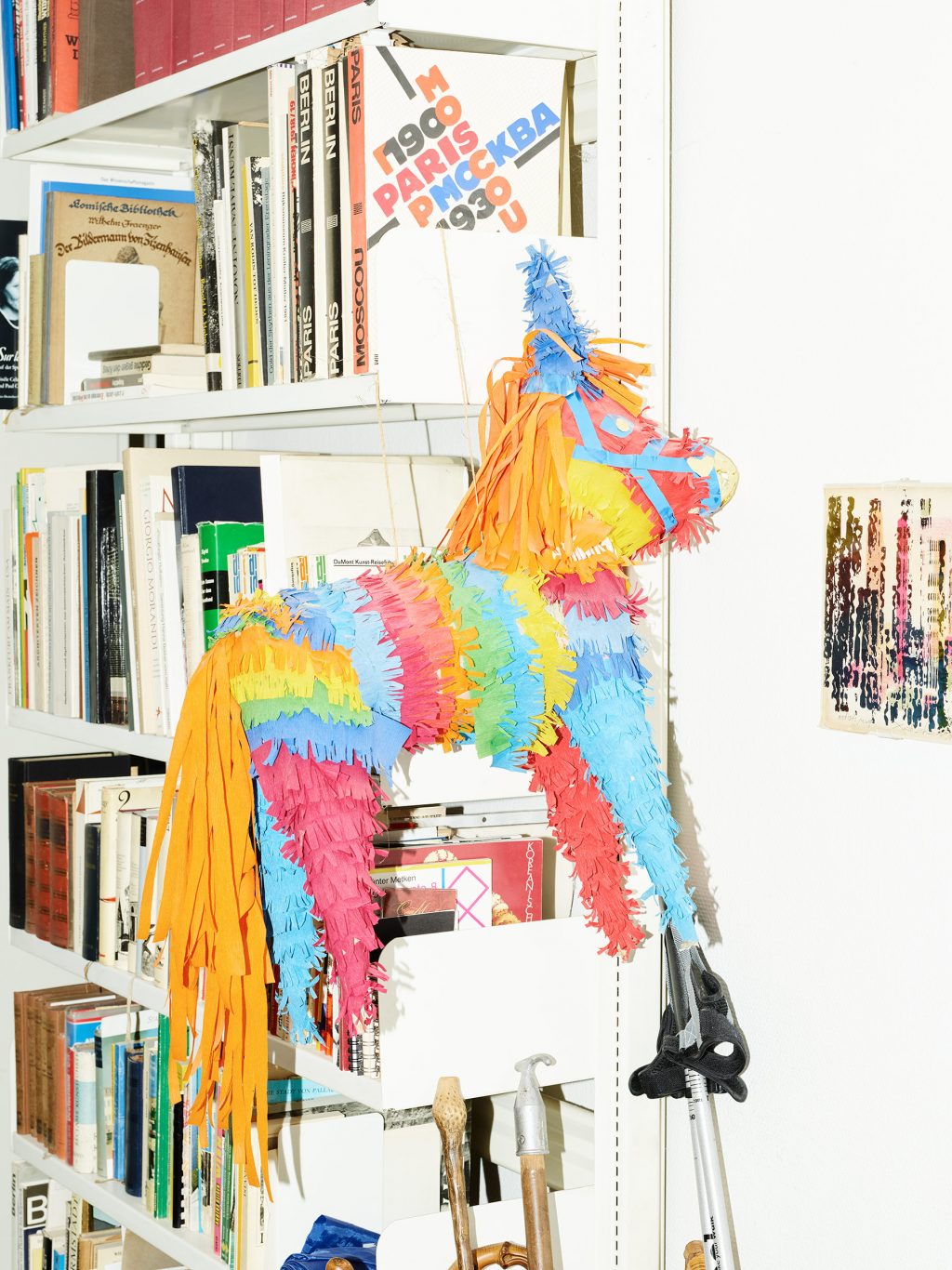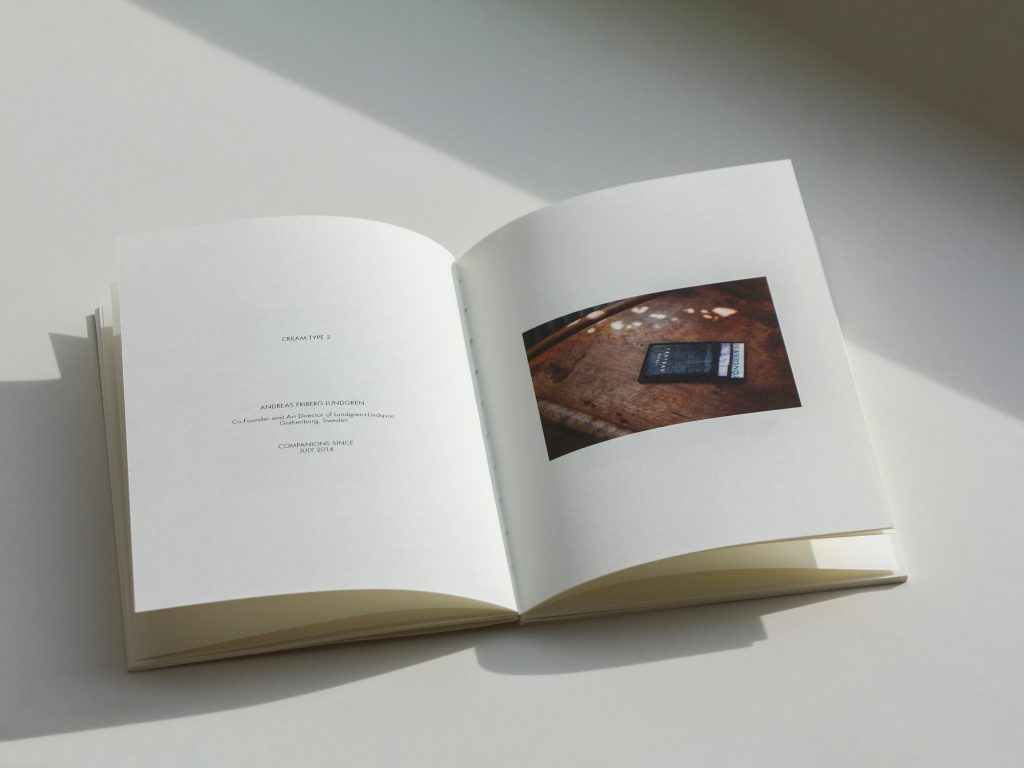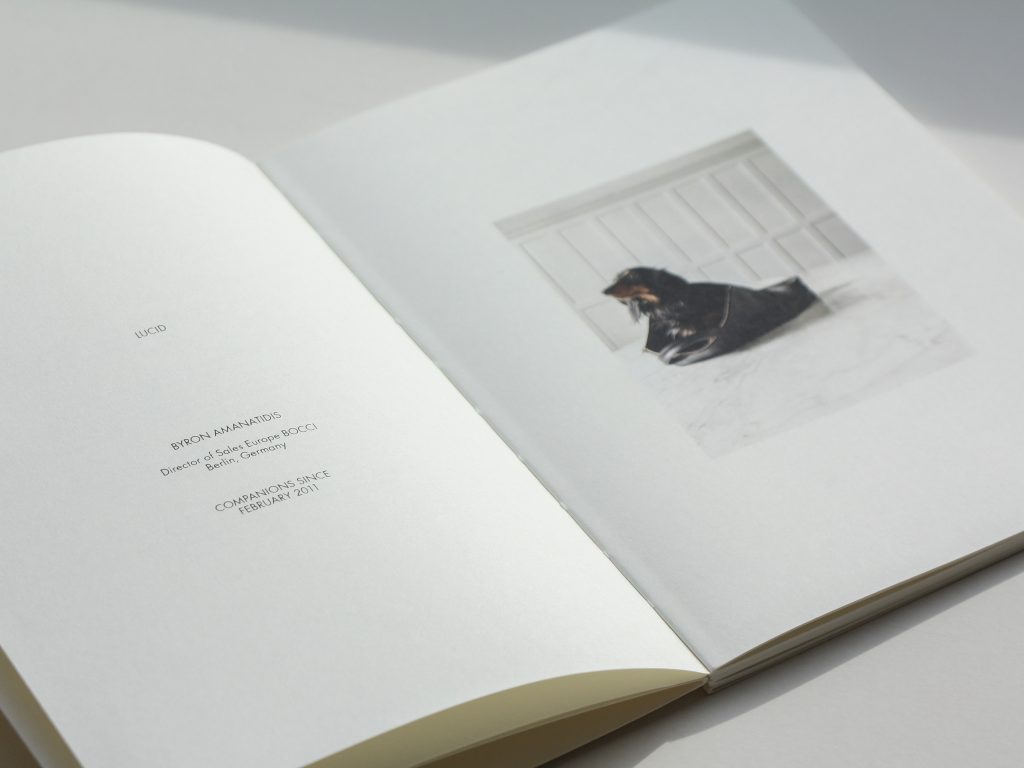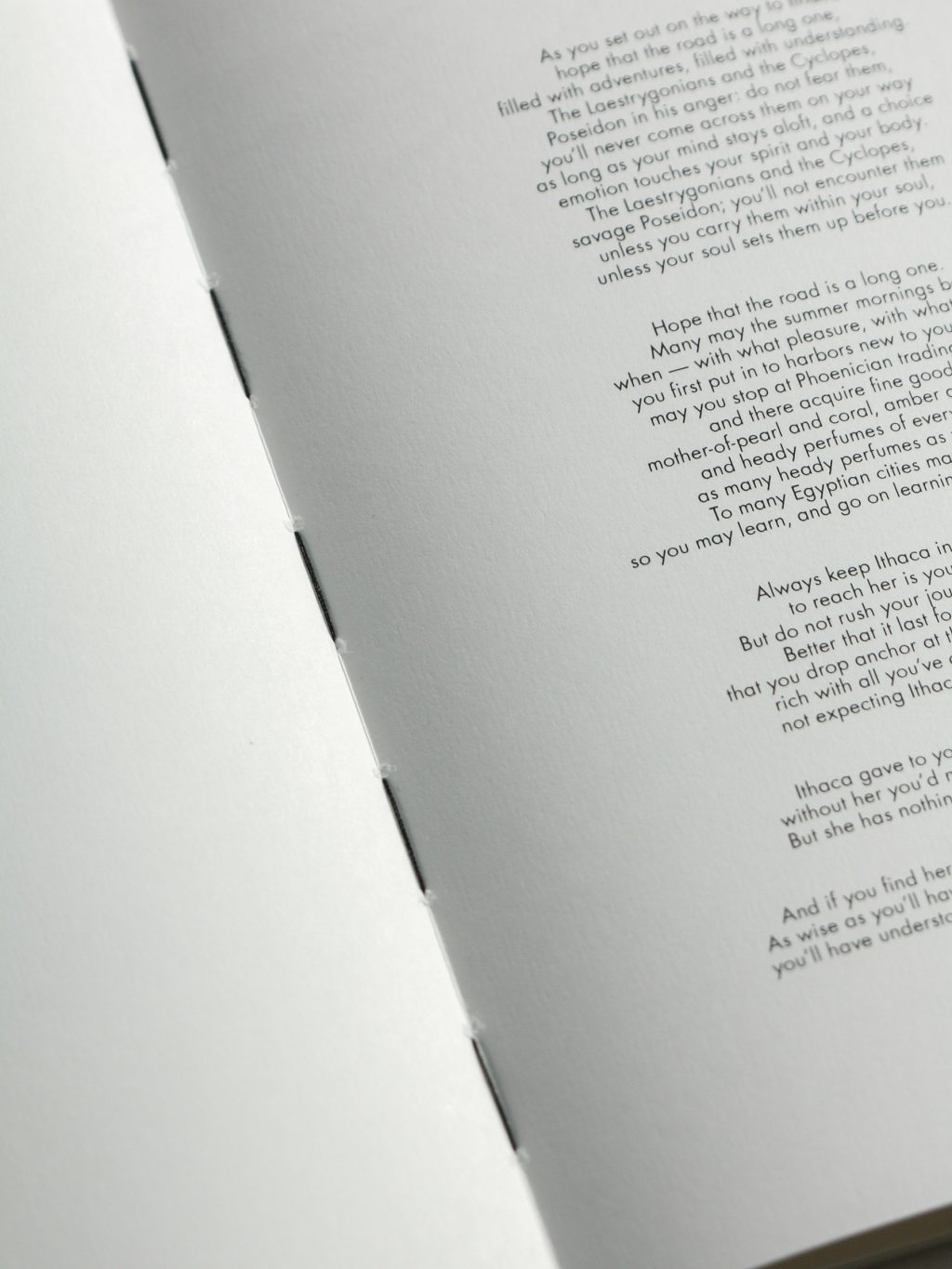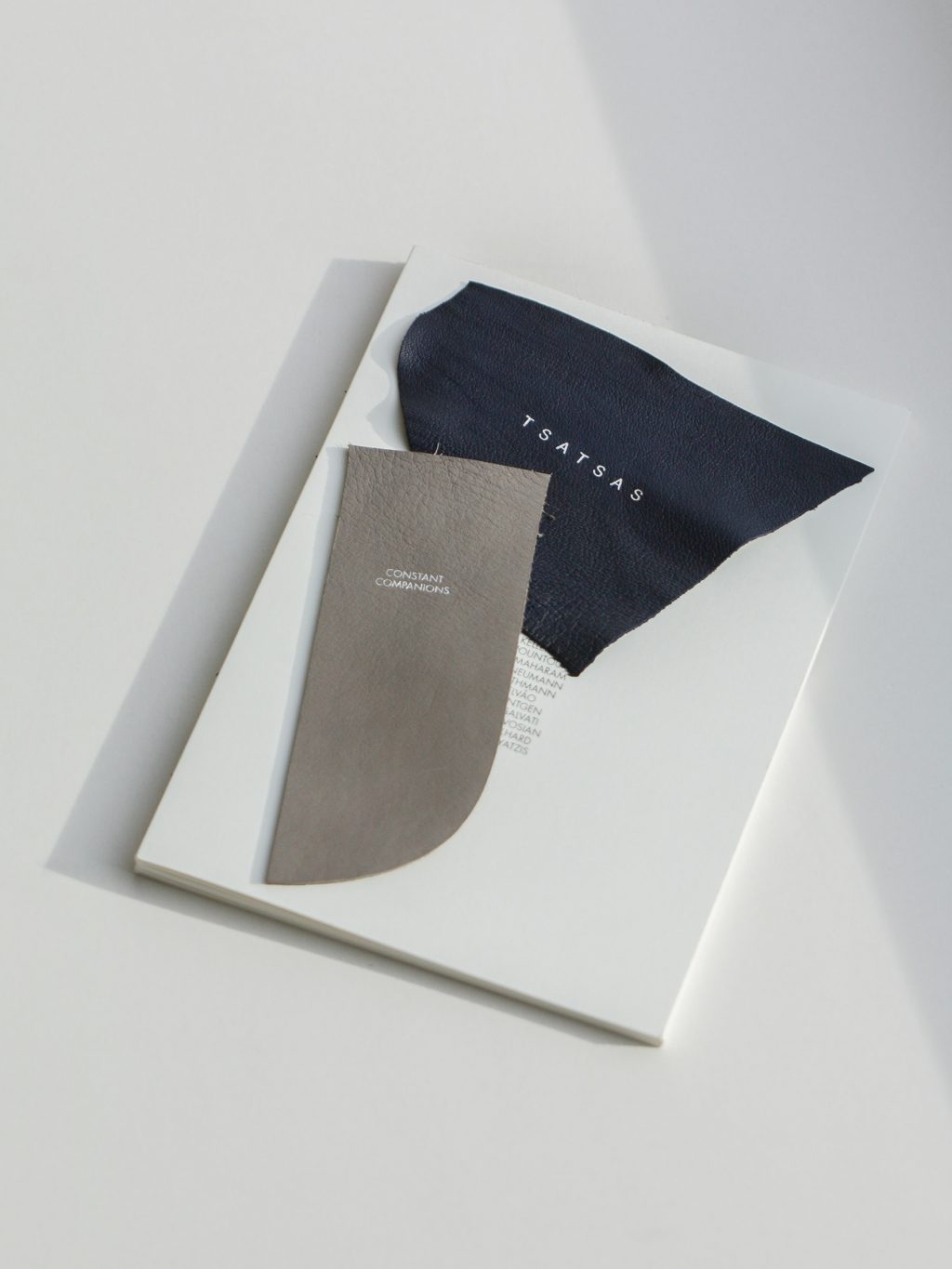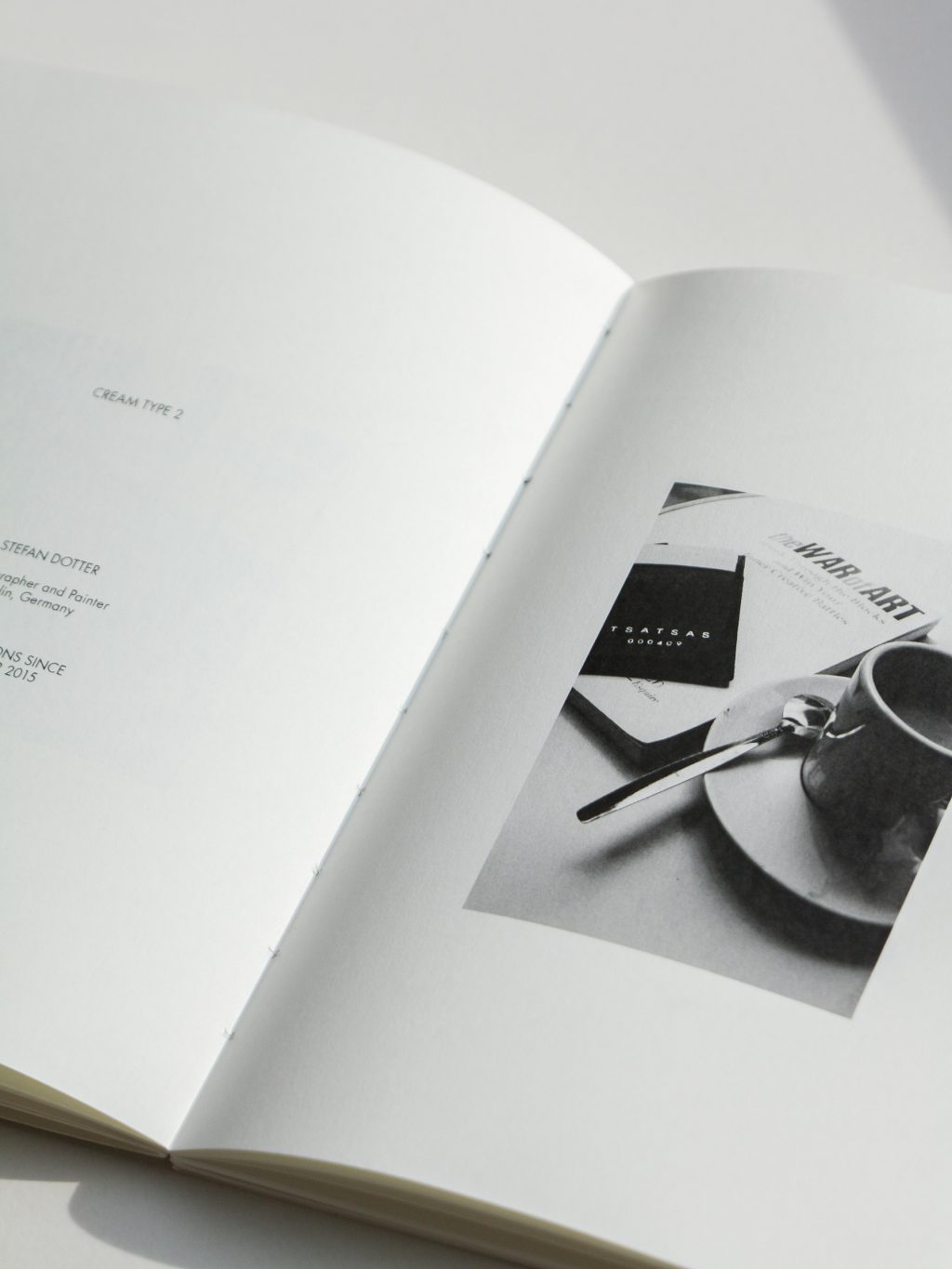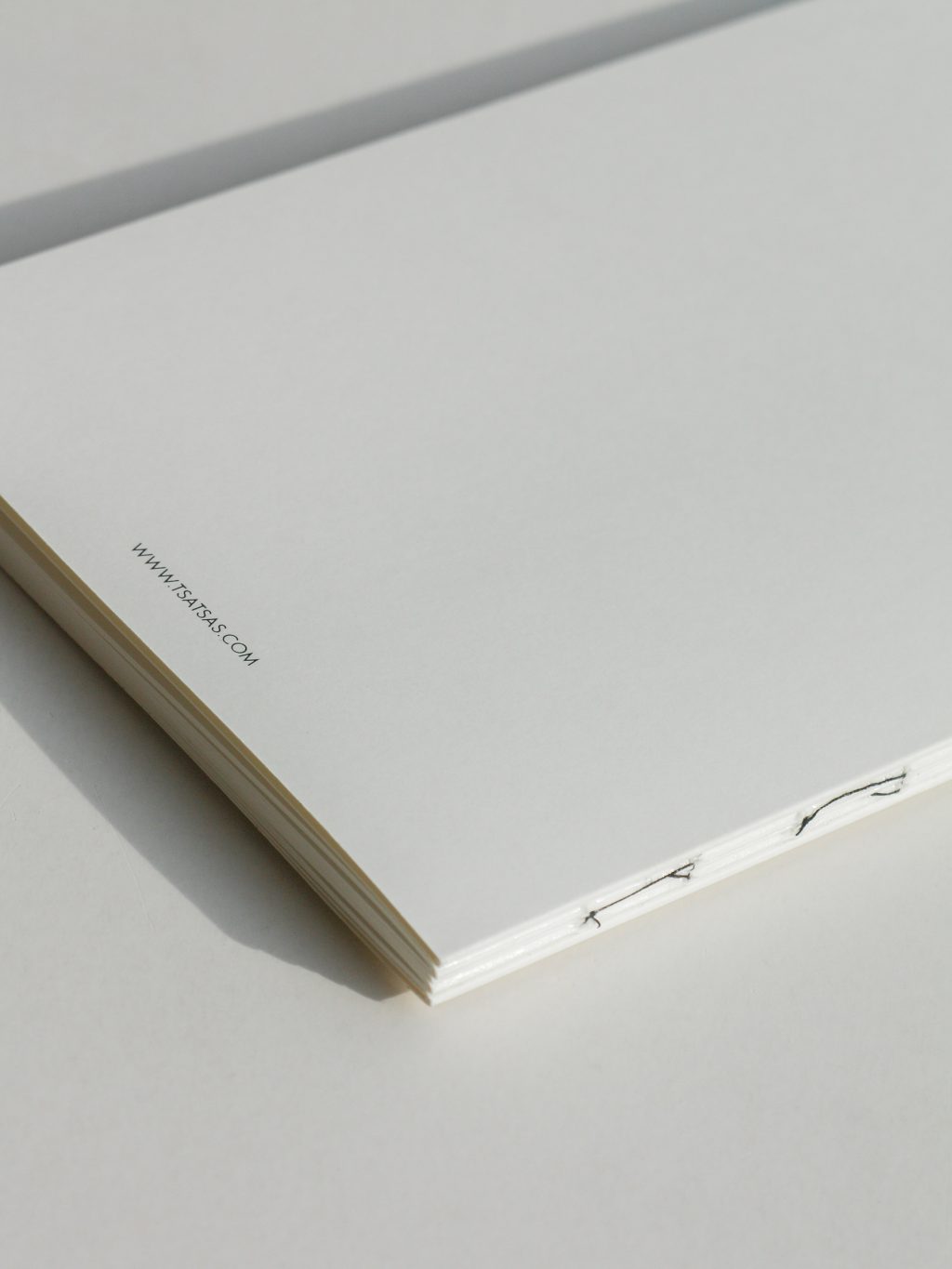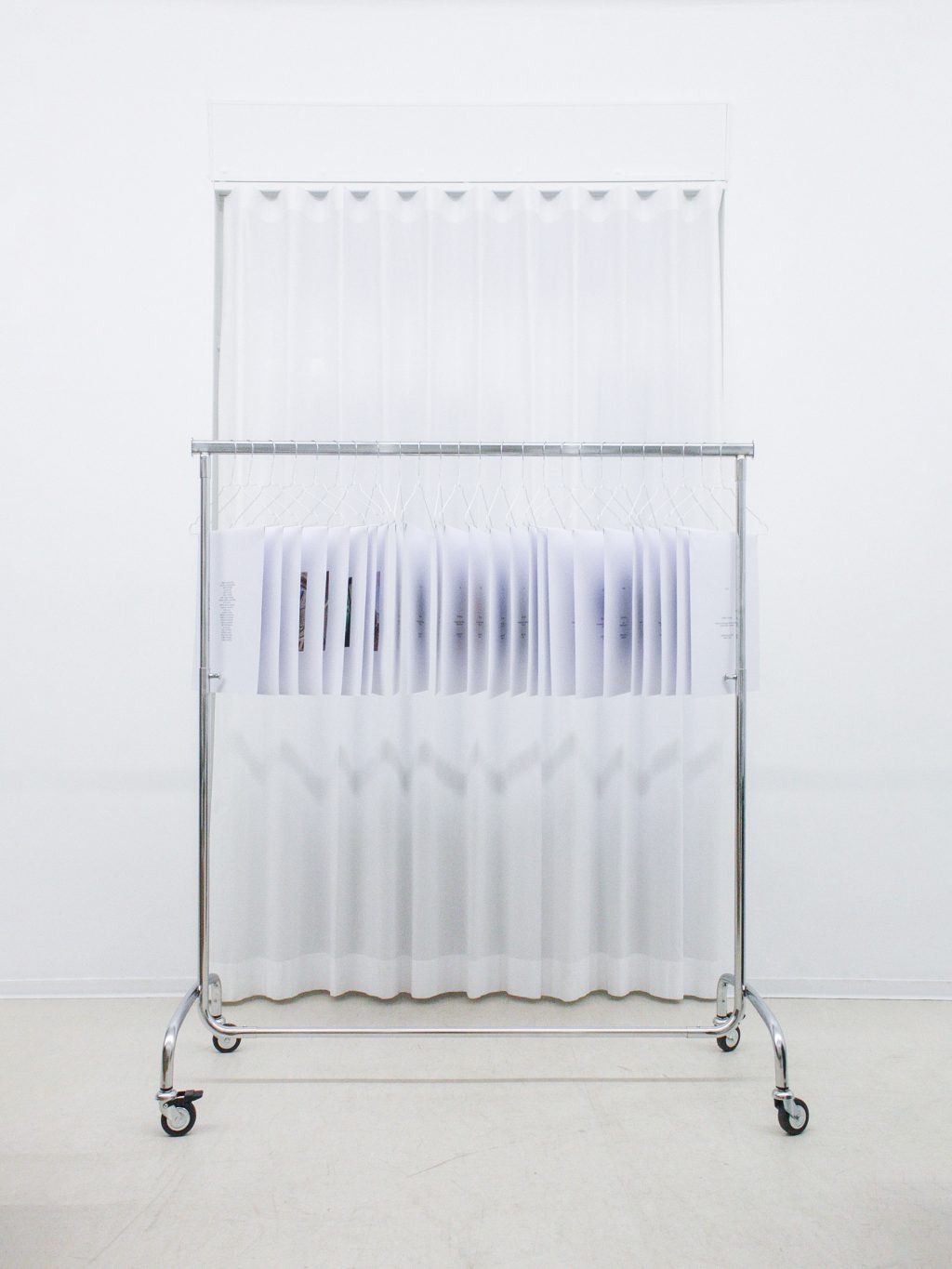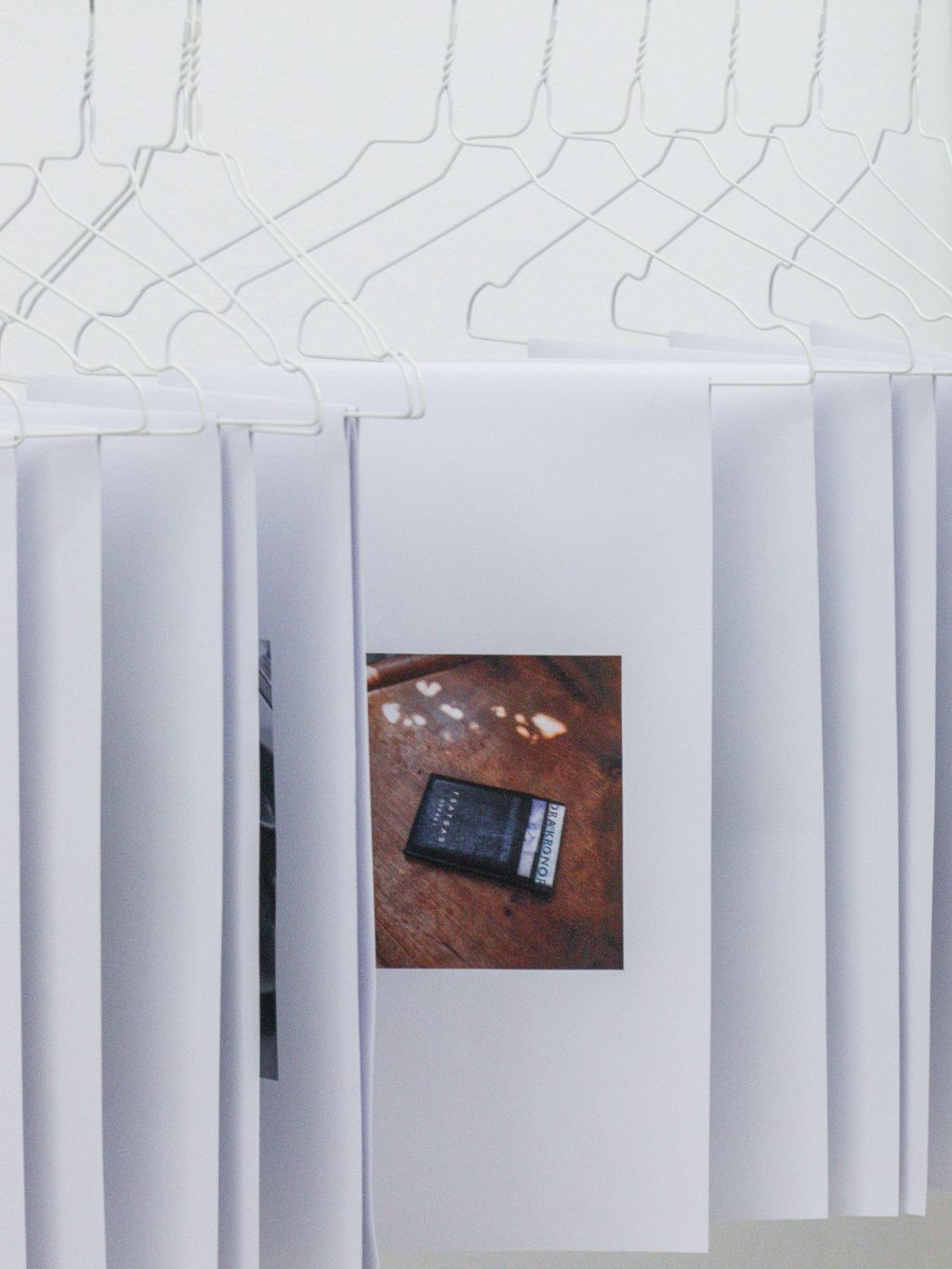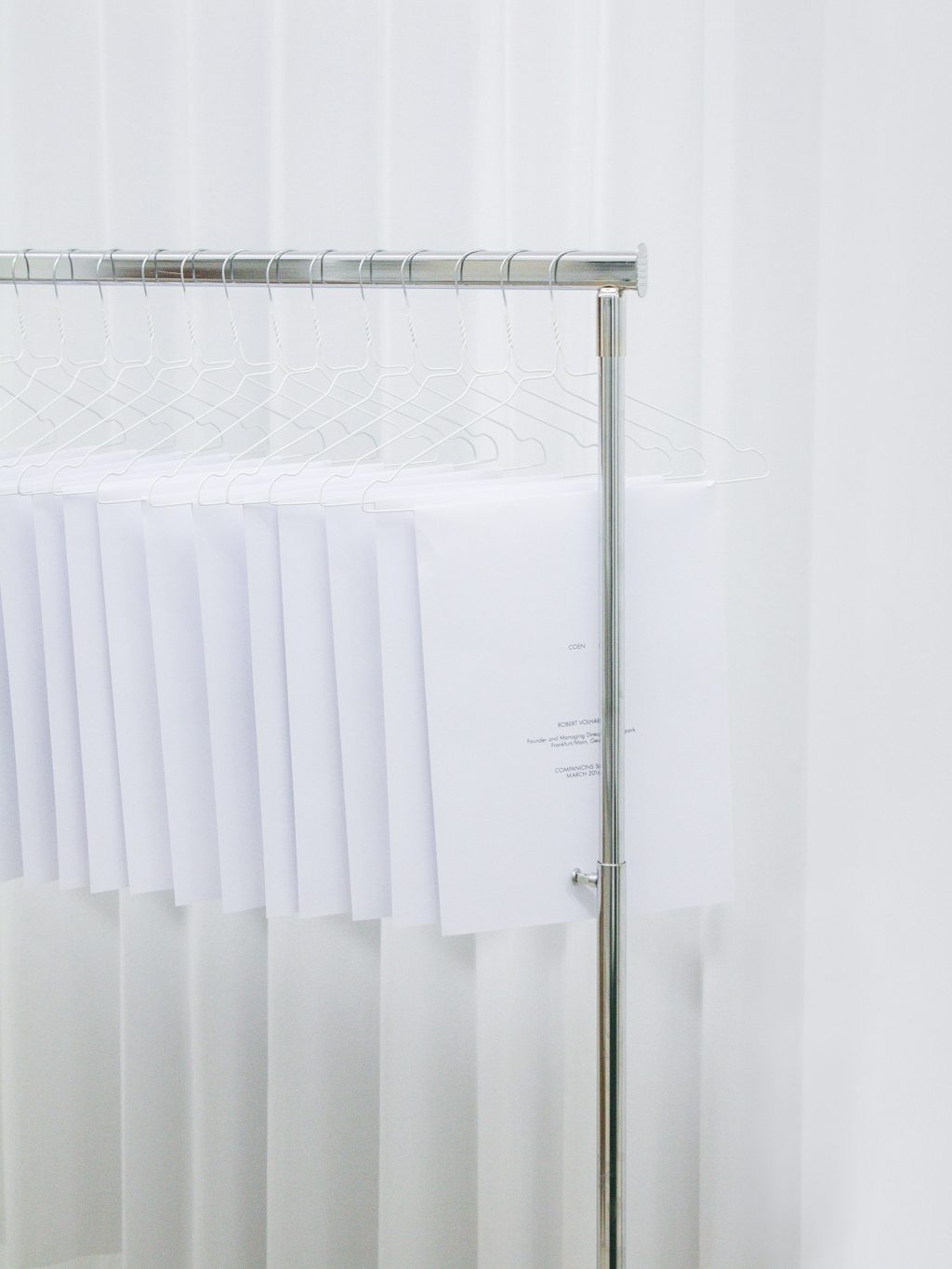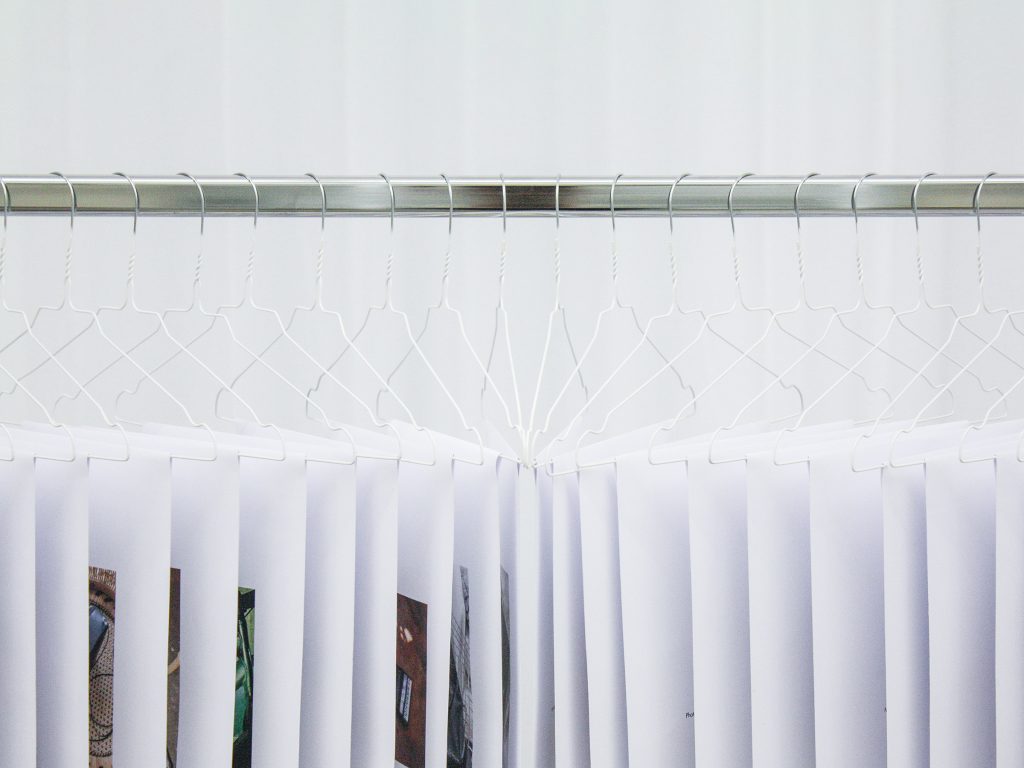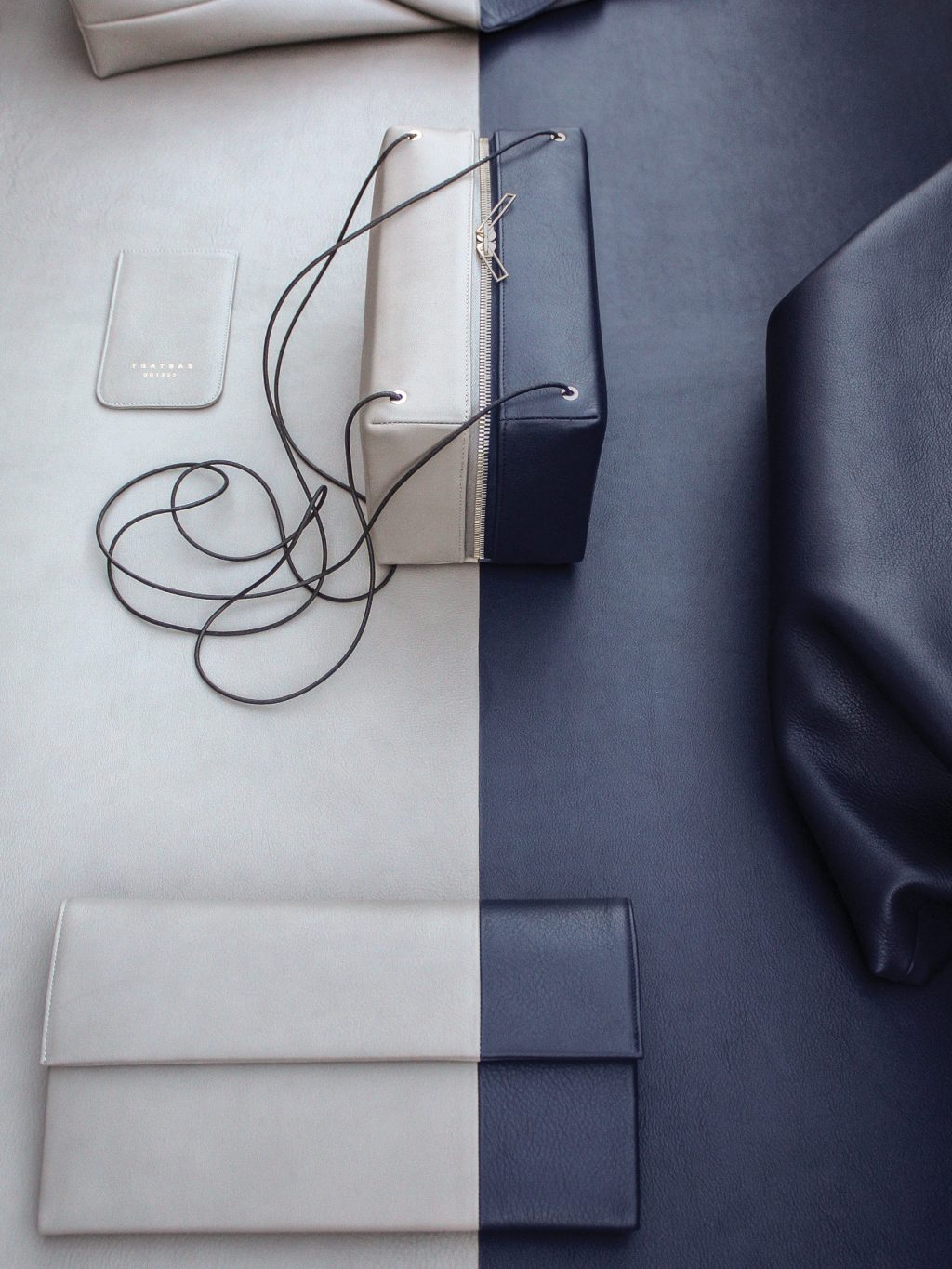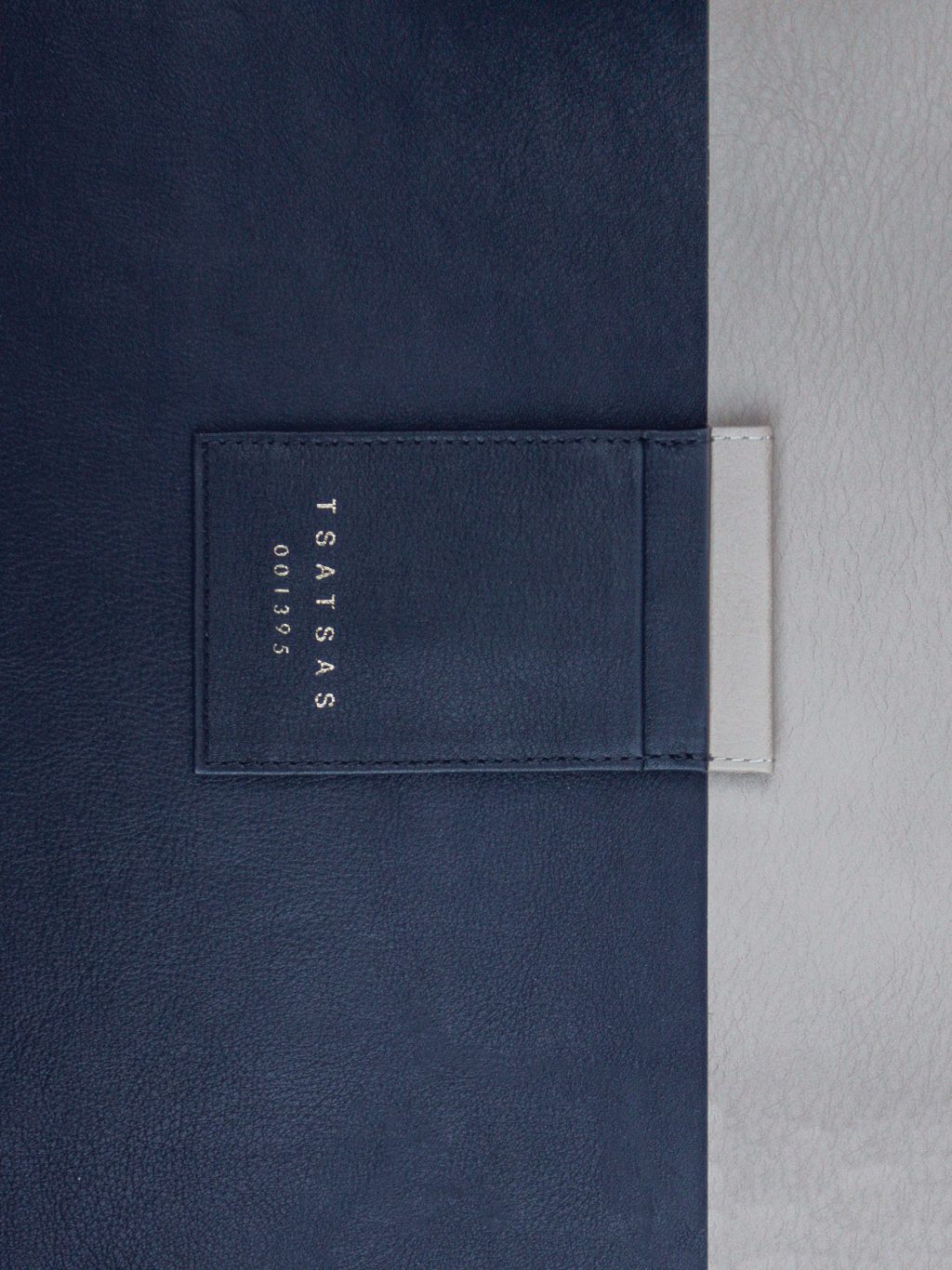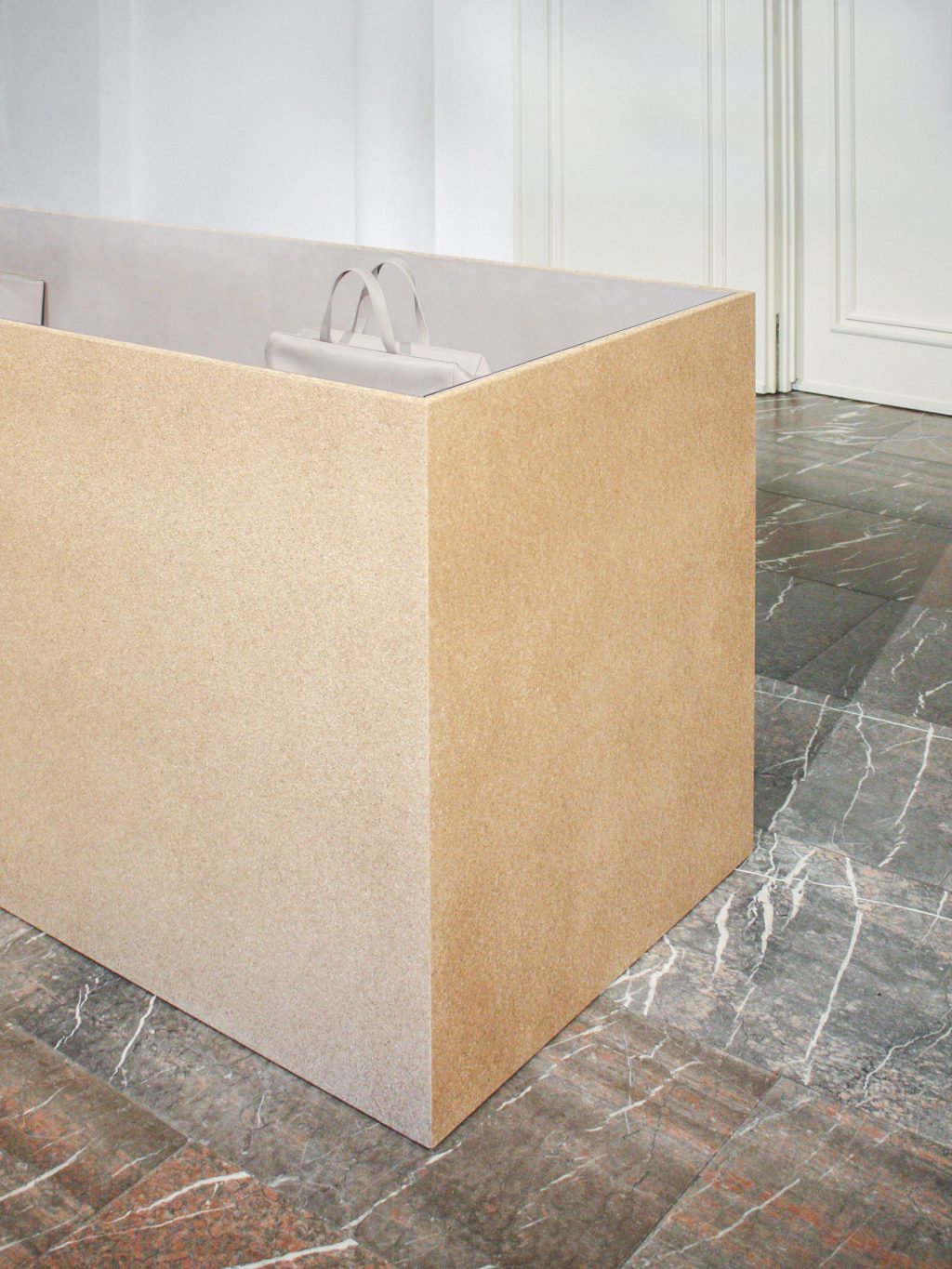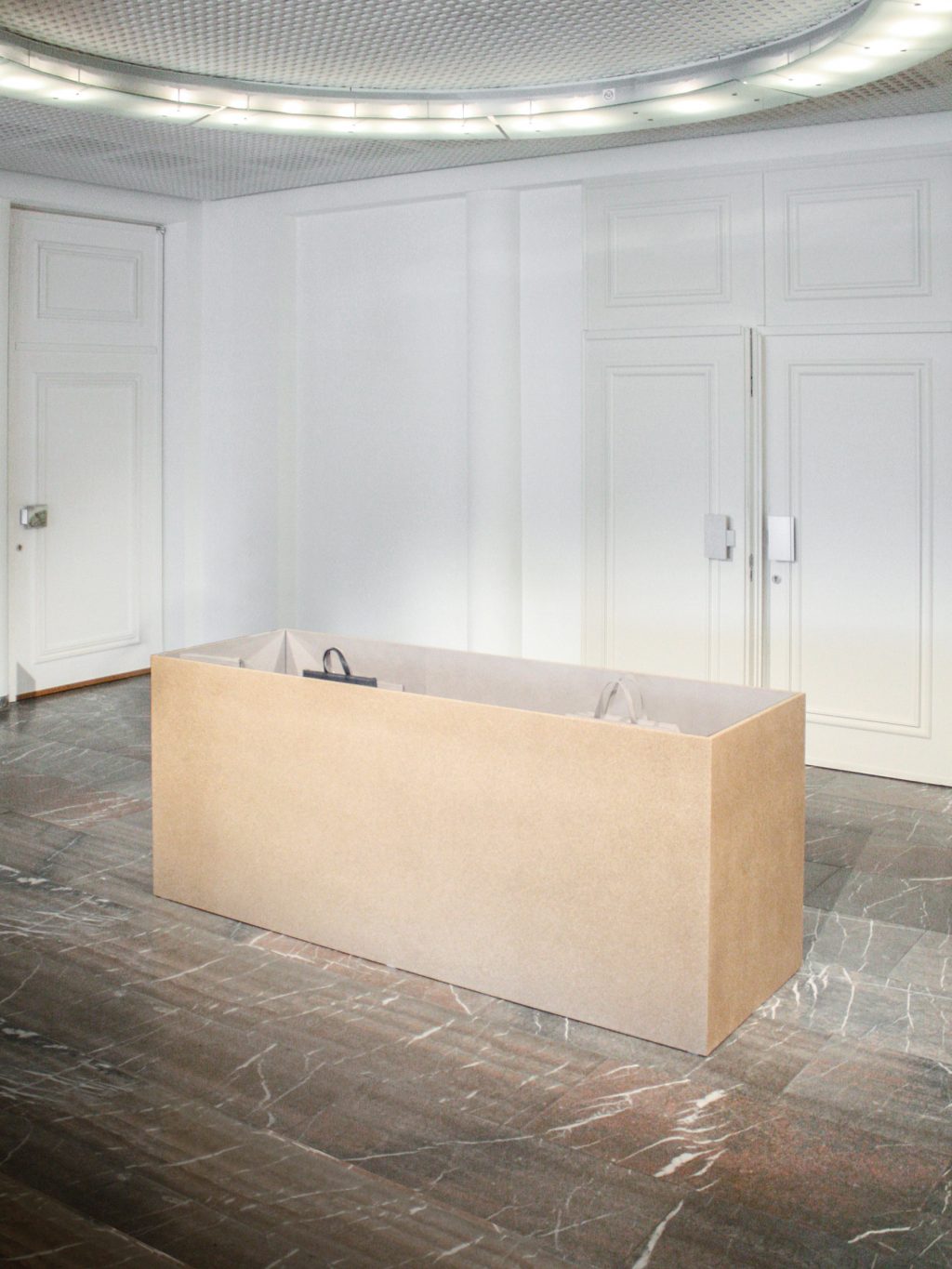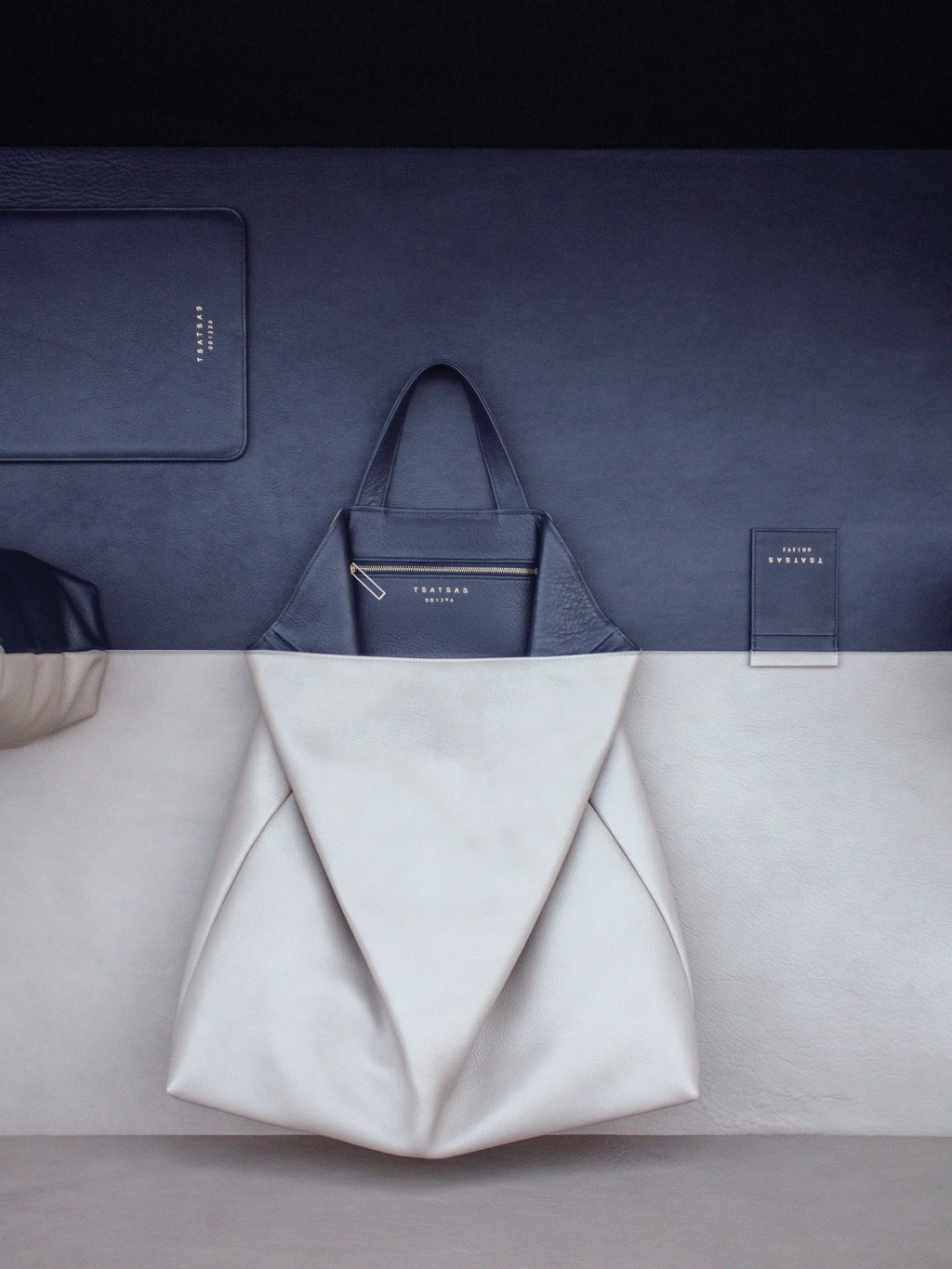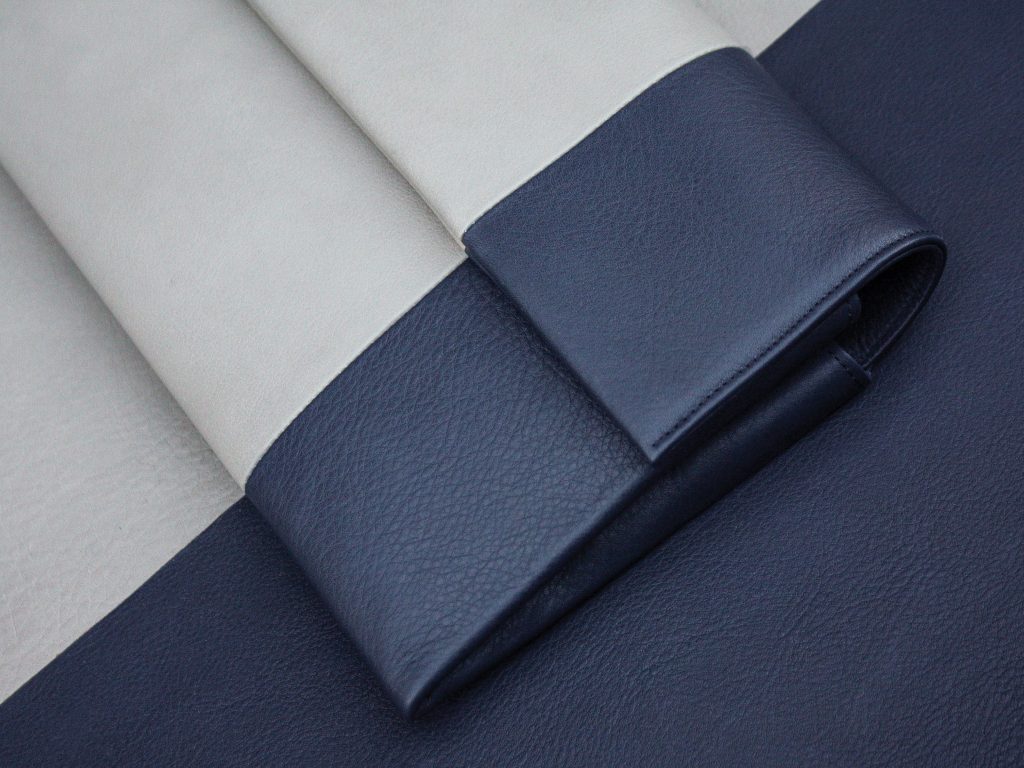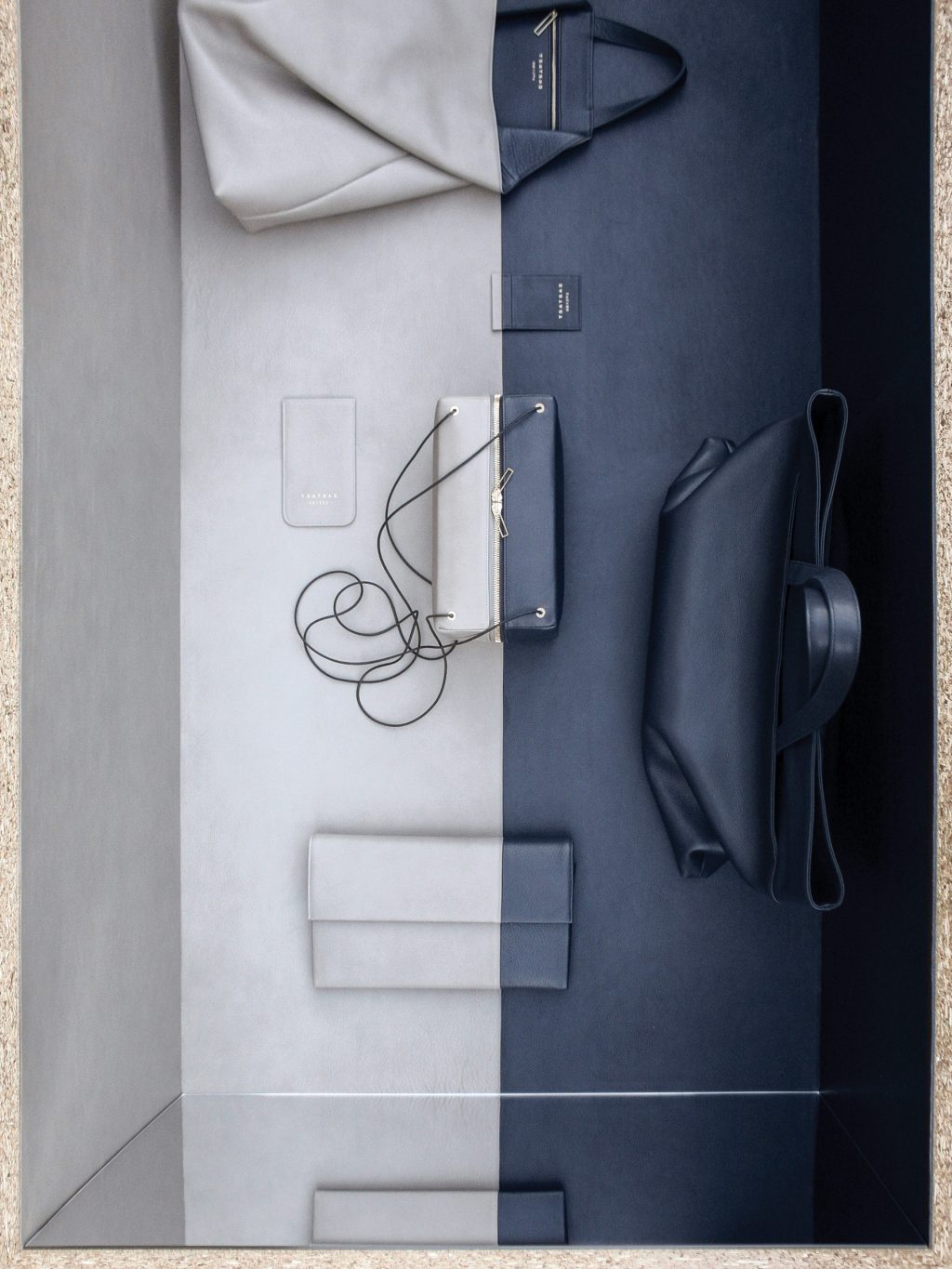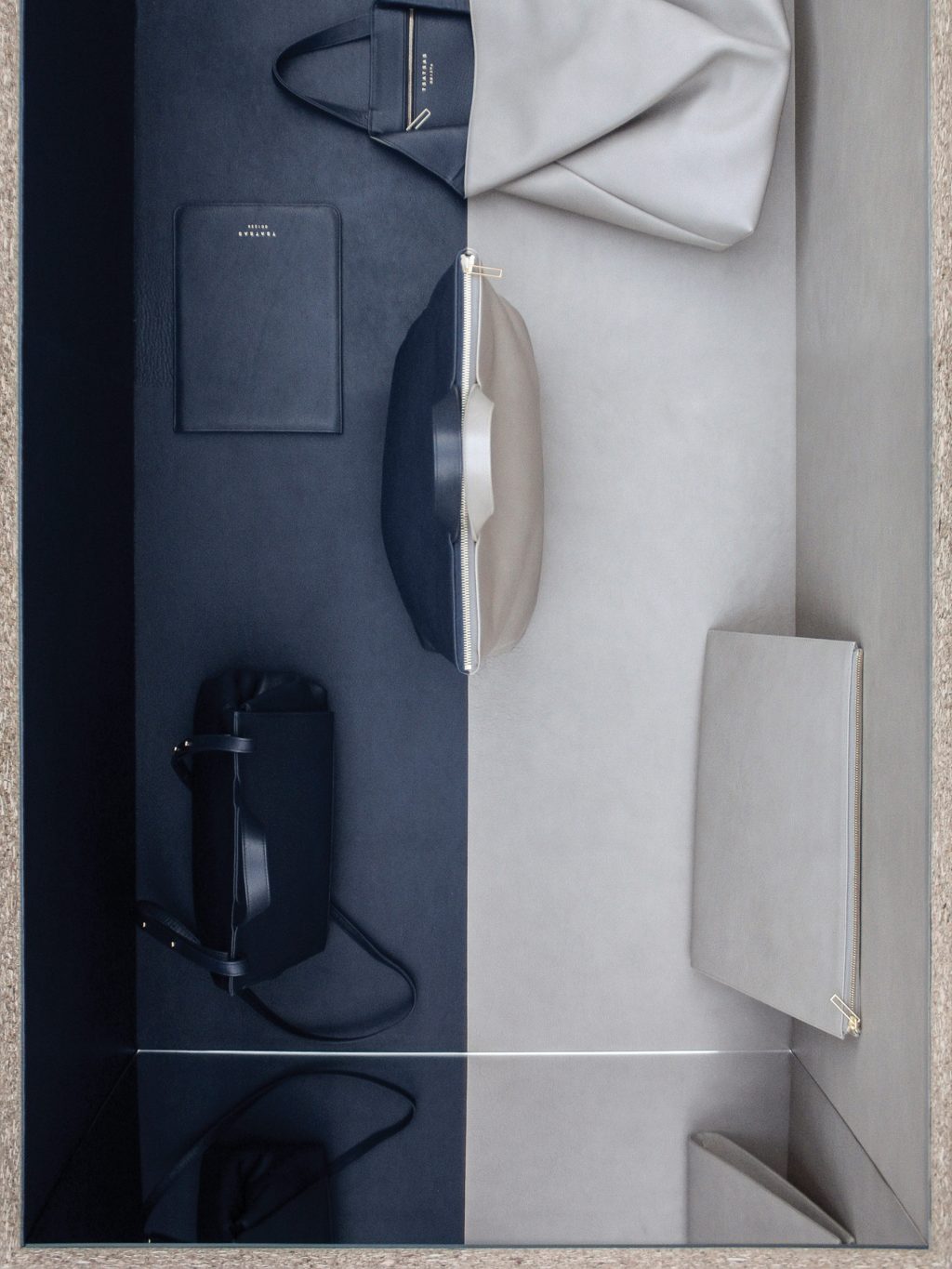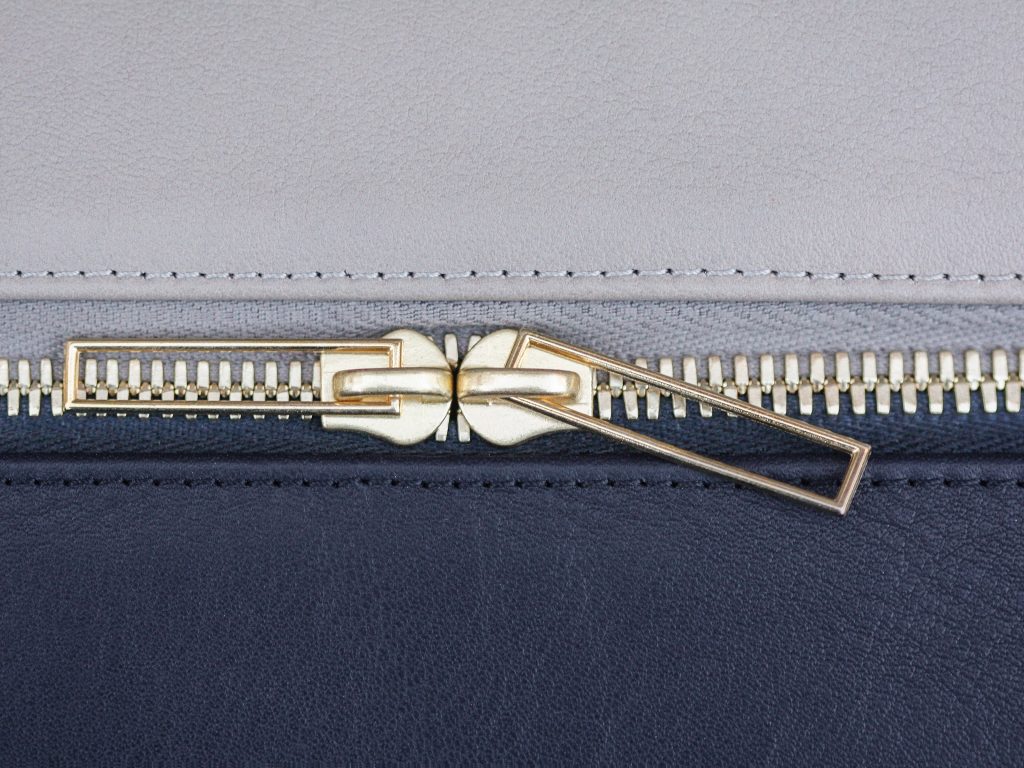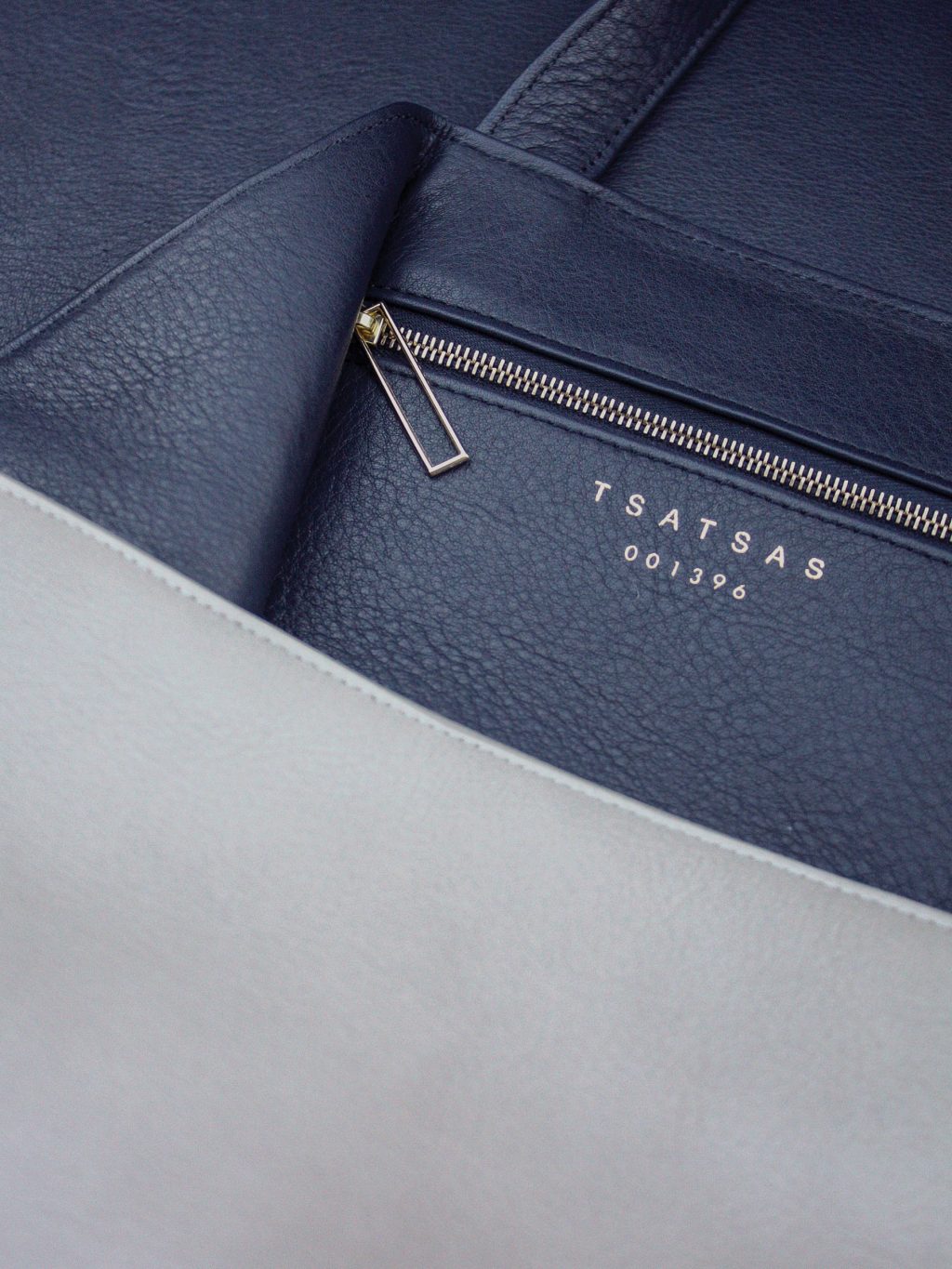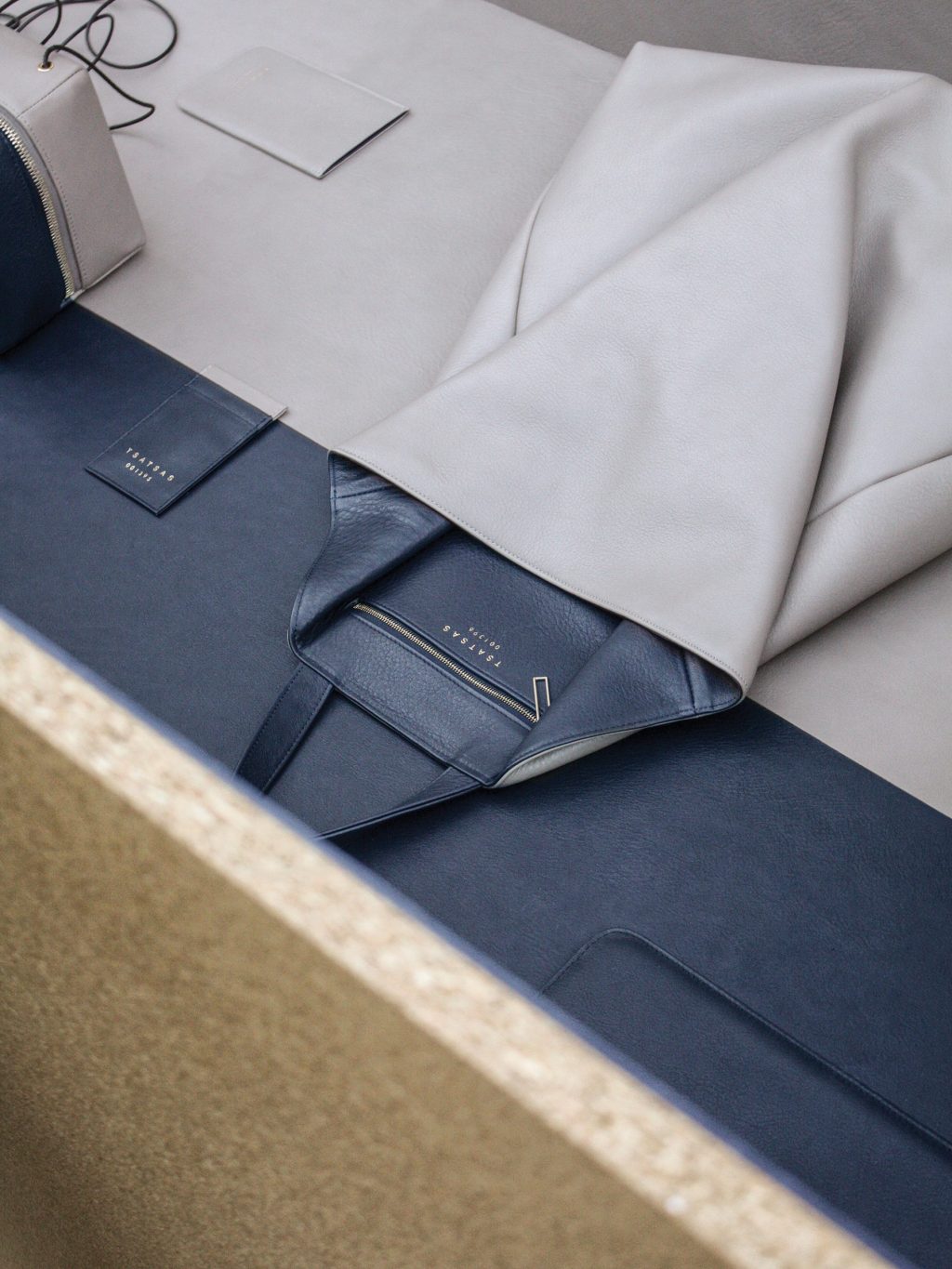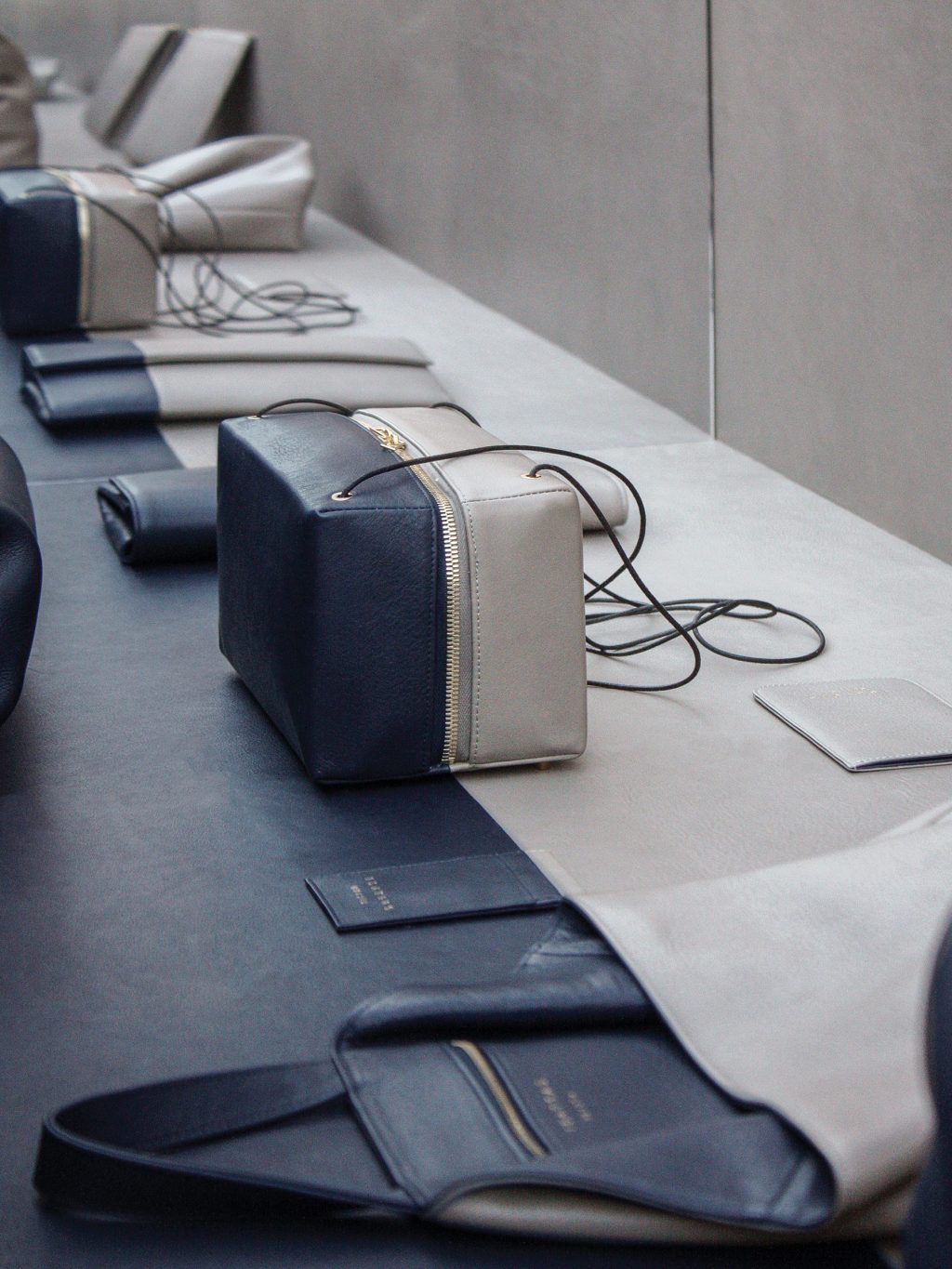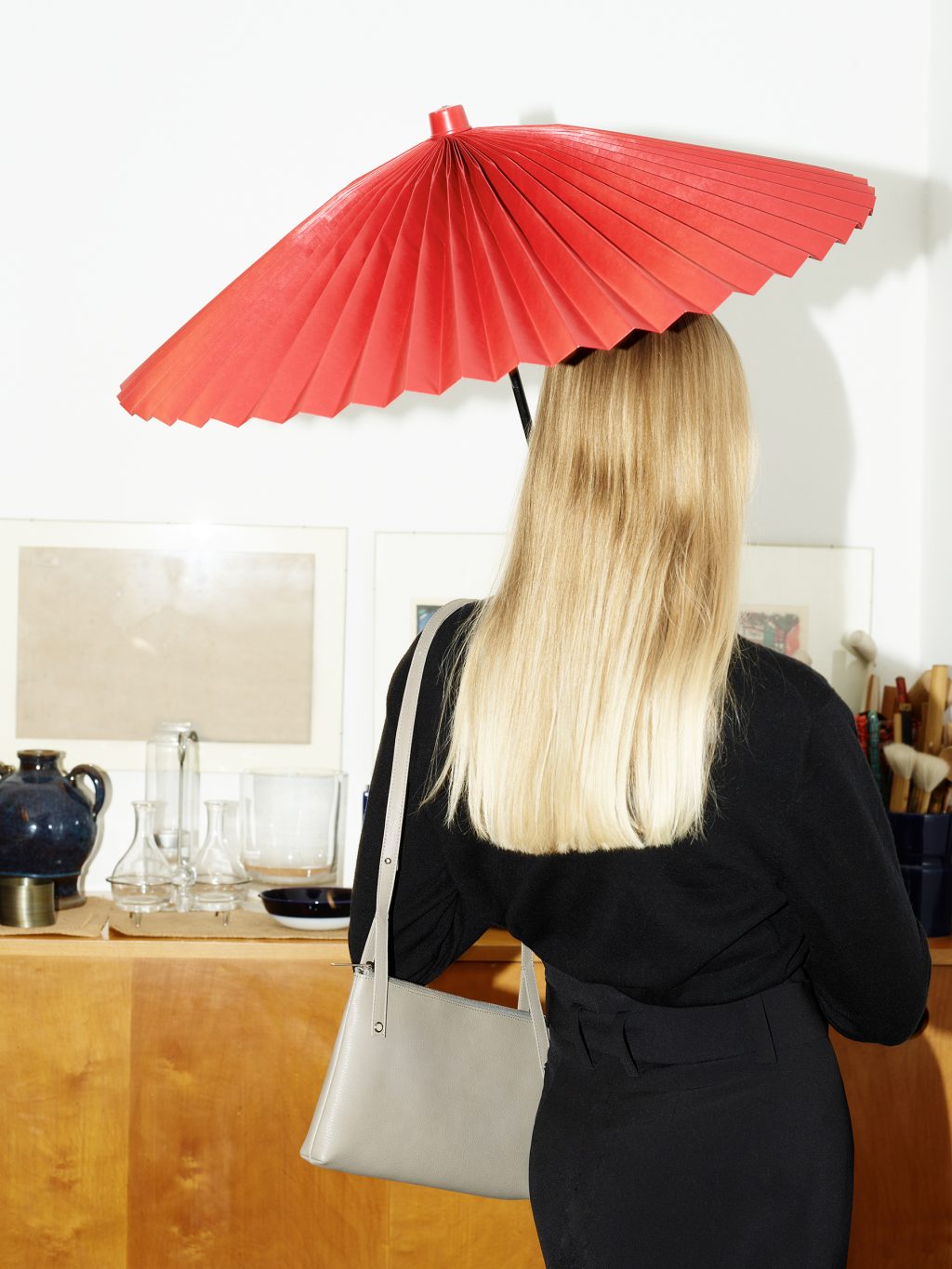
In 1963, Ferdinand Kramer® surprised his wife Lore with a handbag he had specially designed for her. The Frankfurt architect and designer, renowned for his minimalist and Modernist architecture and product designs, created a timeless bag destined to accompany Lore Kramer both during the day and in the evening.
55 years later, TSATSAS is presenting a re-edition of the KRAMER bag. With its timeless feel, functionality and flexibility it very much seems to be a contemporary design and blends seamlessly with the others in the TSATSAS collection.
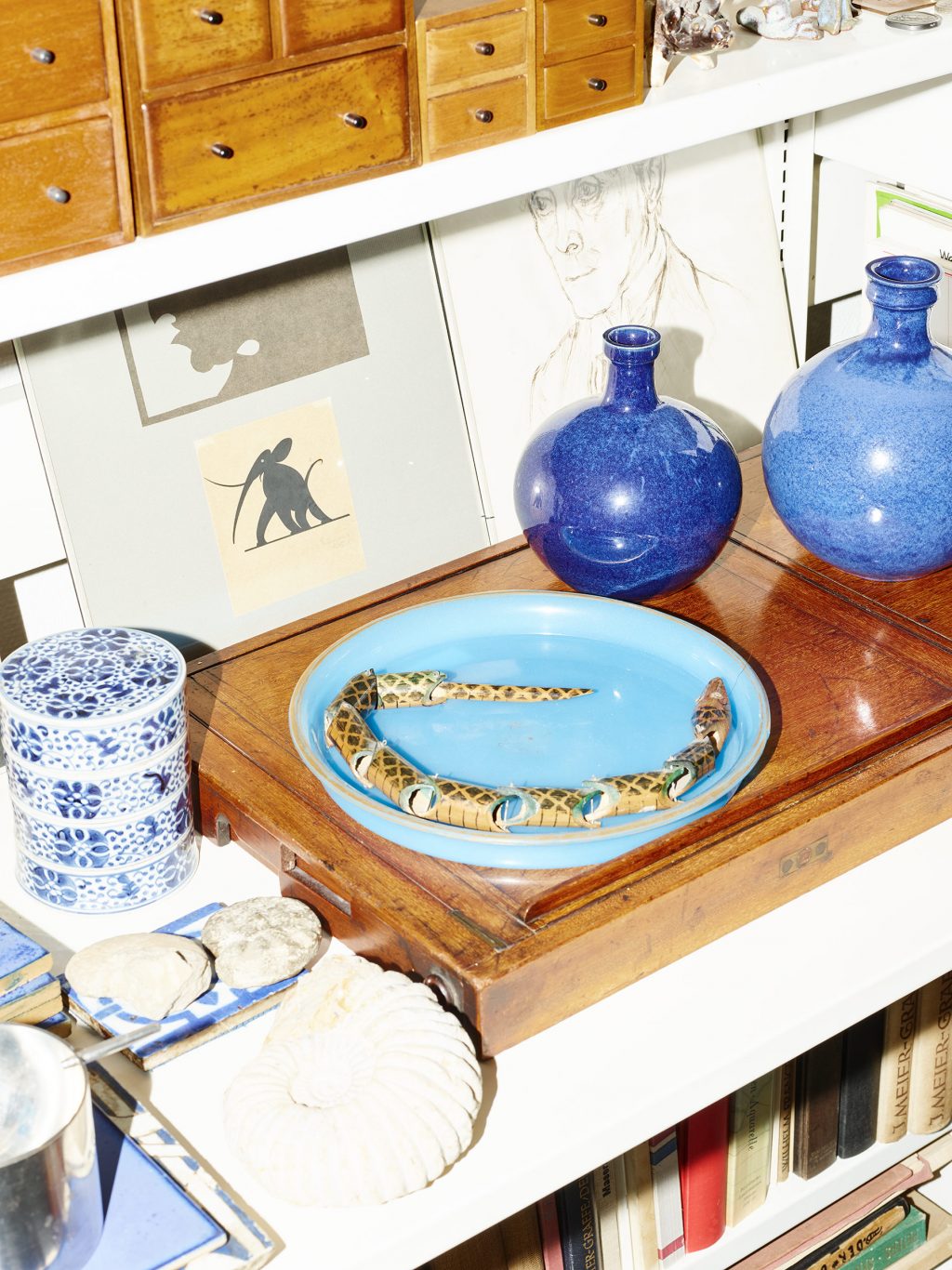
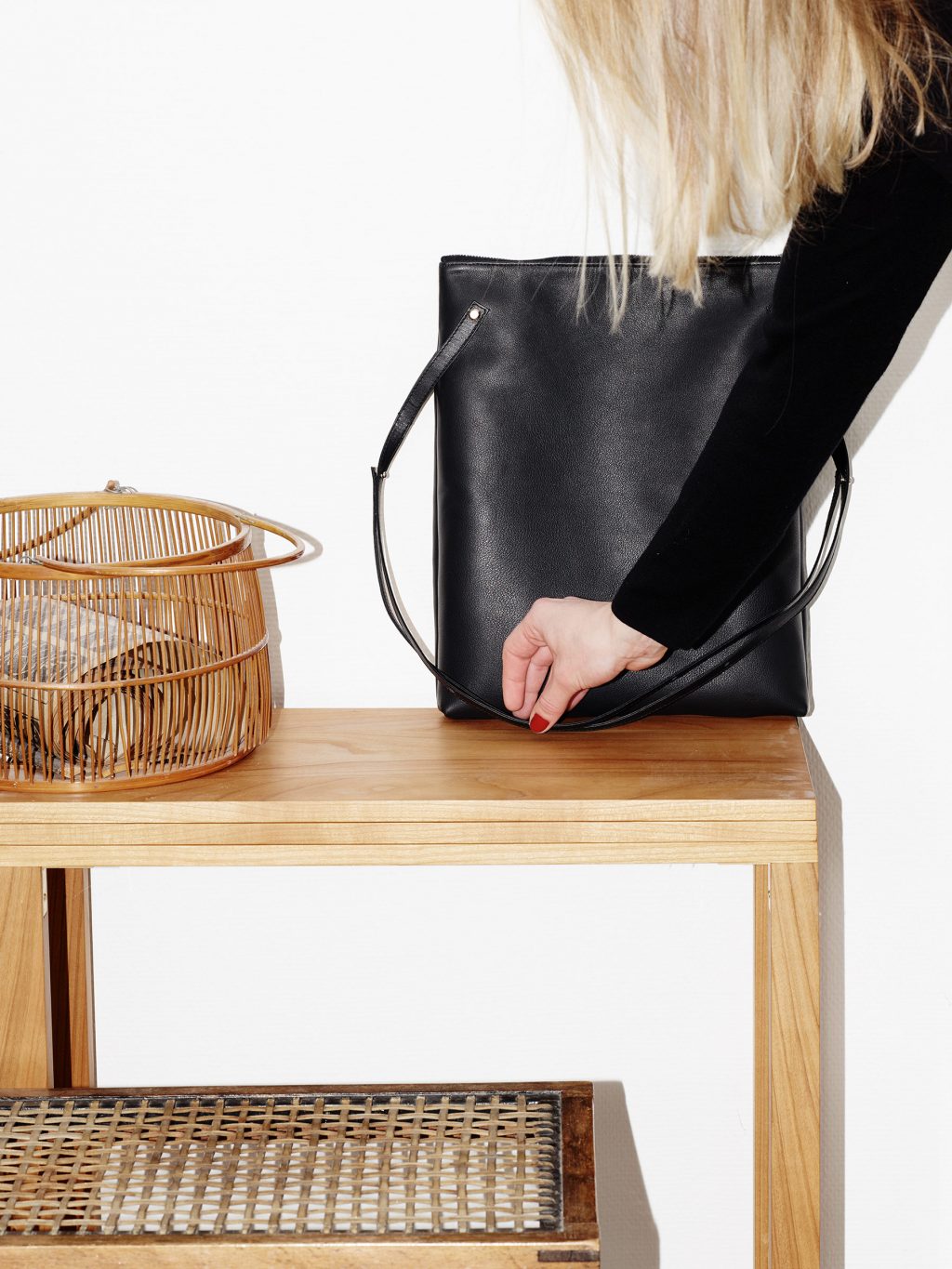
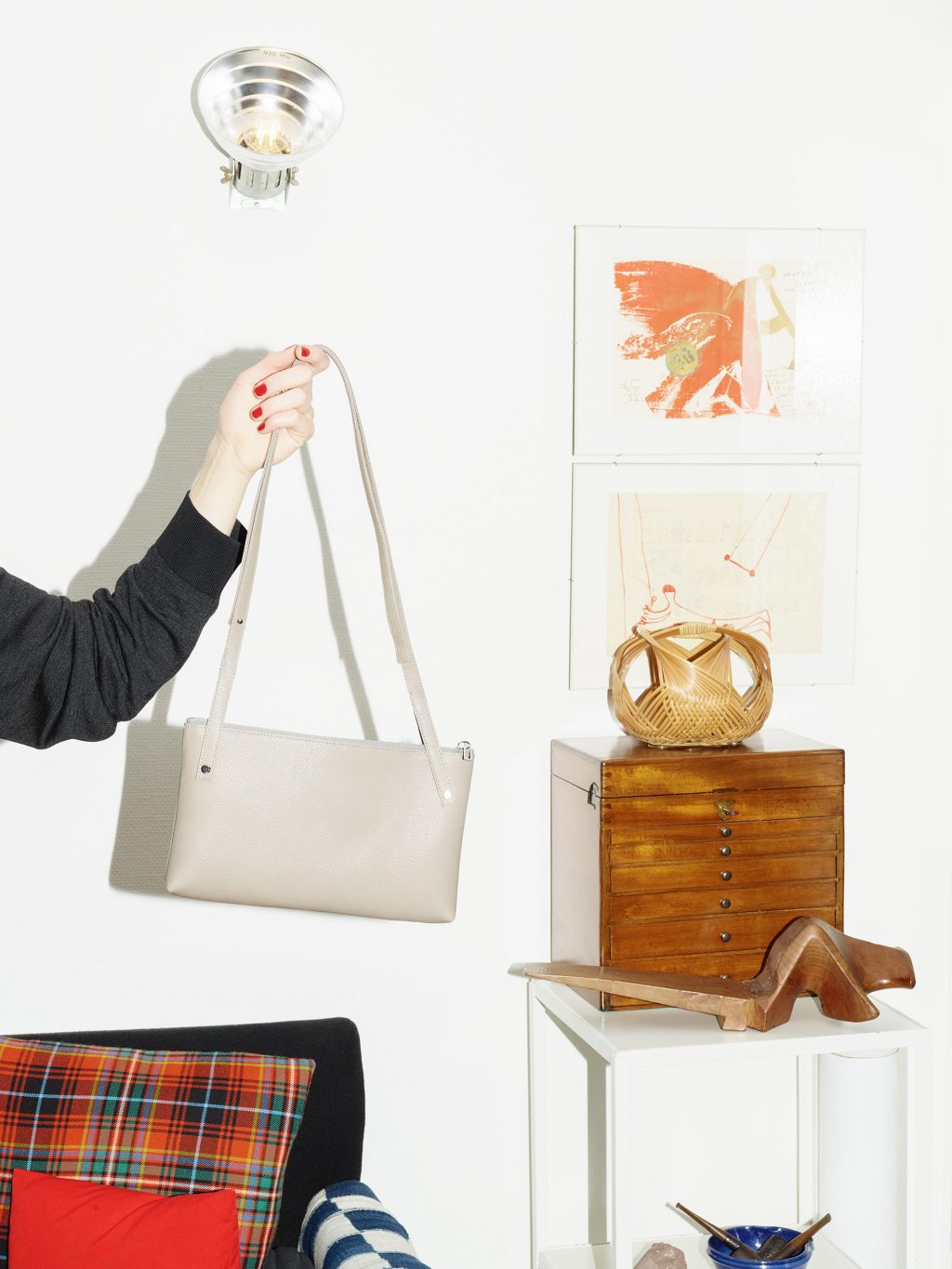
“OBJECTS THAT ARE TRULY MODERN
REMAIN SO ENDURINGLY.”
Adolf Loos
An Essay by Katharina Pennoyer
The re-edition of this handbag by Ferdinand Kramer® is a rather special event: Not many people know that back in the early 1960s Kramer, whose reputation to date has previously derived from his functional buildings and utility objects, designed two handbags and an evening dress for his young wife Lore. He simply didn’t like what was available on the market at the time.
Fashion, the world between the twin poles of innovation and endurance, that interplay of colors, shapes and materials, was a field that Kramer, son of the owner of the renowned “Hut-Kramer” store in Frankfurt, explored early on. During the 1920s, this interest was fostered most crucially by Kramer’s relationship with the interior and fashion designer Lilly Reich, later the partner of Mies van der Rohe, and her young, talented student Beate Feith, whom Kramer married in 1930. It was Beate for whom he designed a variety of hats, and he sent her fashion sketches from his trip to Paris in 1925, where he sought out Le Corbusier. During his exile in New York too, and later in Frankfurt, he sketched Beate’s designs for publication in magazines such as LOOK.
No less important for Kramer’s oeuvre were his encounters in Vienna and Frankfurt with Adolf Loos, that ingenious architect and member of the “Lebensreform” movement, who was 28 years his senior and whom he revered. Indeed, it was Adolf Loos who, in the year of Ferdinand Kramer®’s birth, 1898, defined in his article “The Gentlemen’s Hats” thus:
“Objects that are truly modern remain so enduringly.”*
The versatile handbag Ferdinand Kramer designed more than five decades ago is one marvelous example of the principle – and which has now been updated by TSATSAS in three different sizes.
*Adolf Loos, Sämtliche Schriften, ed. Franz Glück, Verlag Herold,
Vienna, 1962, p.83
